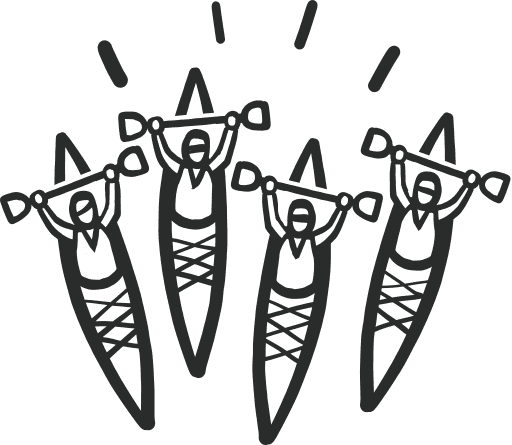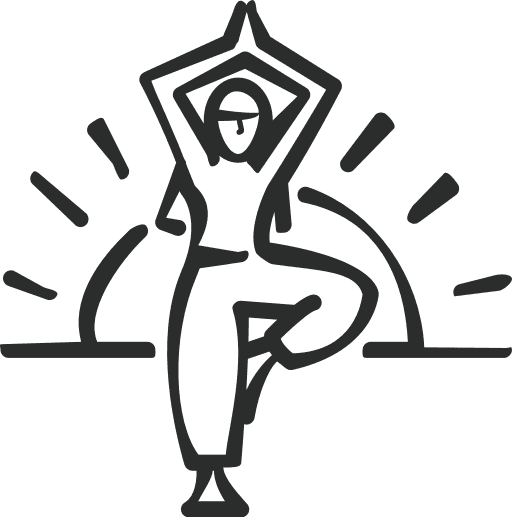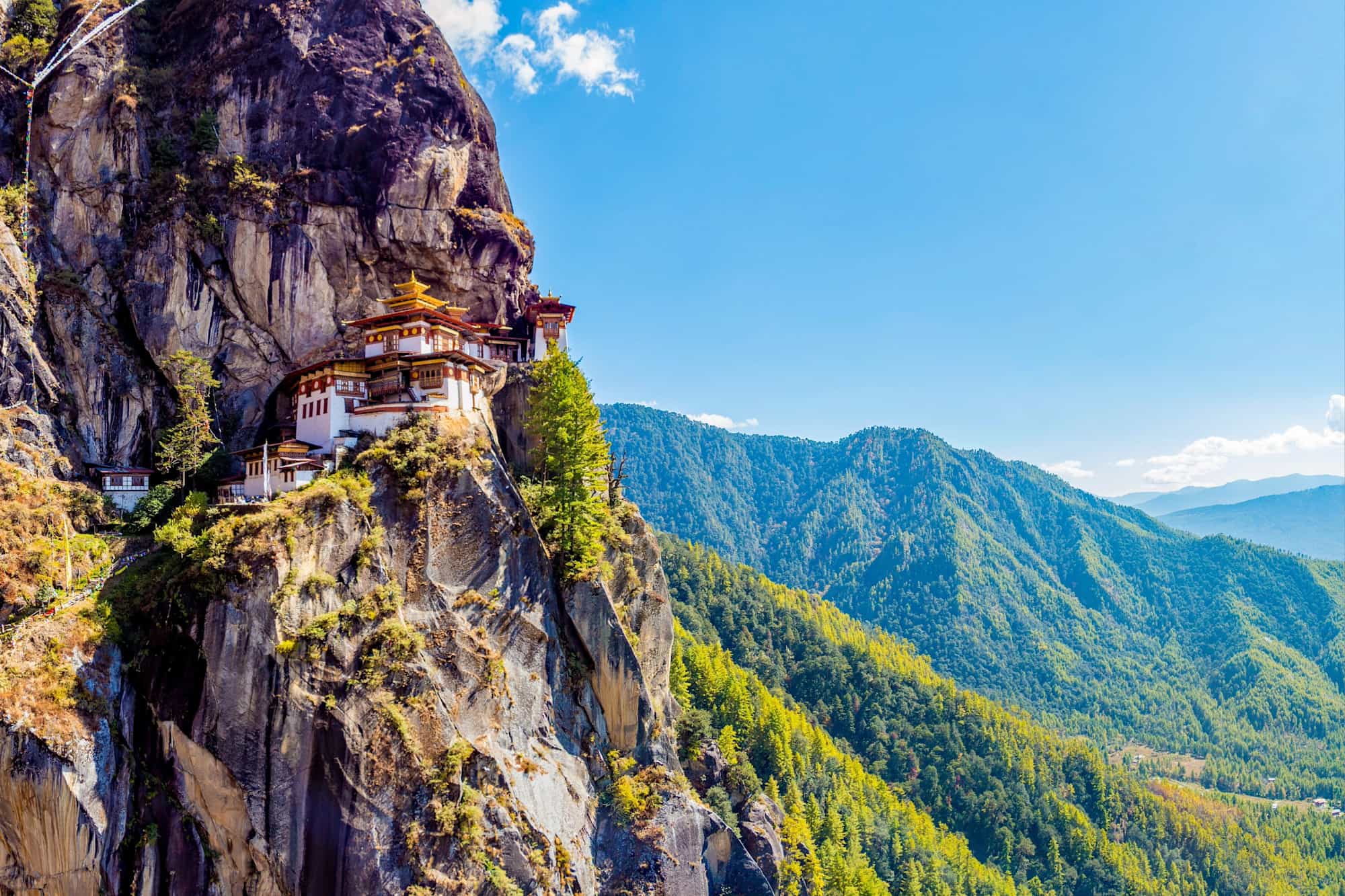
Trek the Druk Path and Trans Bhutan Trail
Follow Bhutan's legendary trails among towering peaks and sacred temples as you explore this unique Himalayan kingdom on foot
What's Included?
Activities & Certified Guides
All itinerary activities with local, expert, English-speaking guidesAccommodation
3 nights camping on the Druk Path trek, 6 nights in hotelsMeals
All your meals are included on this tripTransfers
Airport transfers and everything in betweenPorterage
Luggage and supplies are transported by donkey & yak on the Druk Path trek, maximum 15kg per person allowanceSmall Like-minded Groups
Solo-friendly by design, join our small n’ sociable groups of up to 14 like-minded, active and outdoorsy people…
…
What's it like?







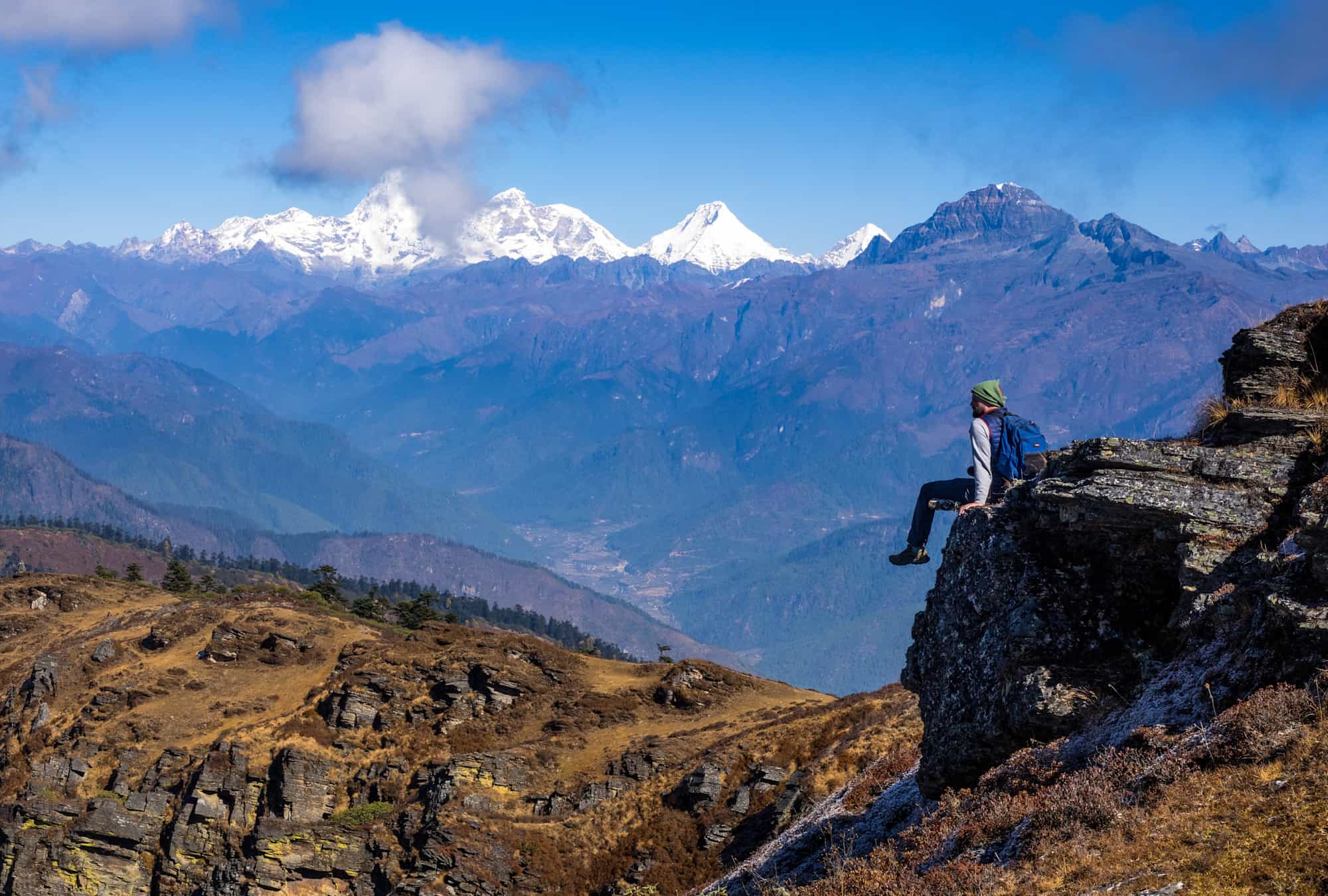
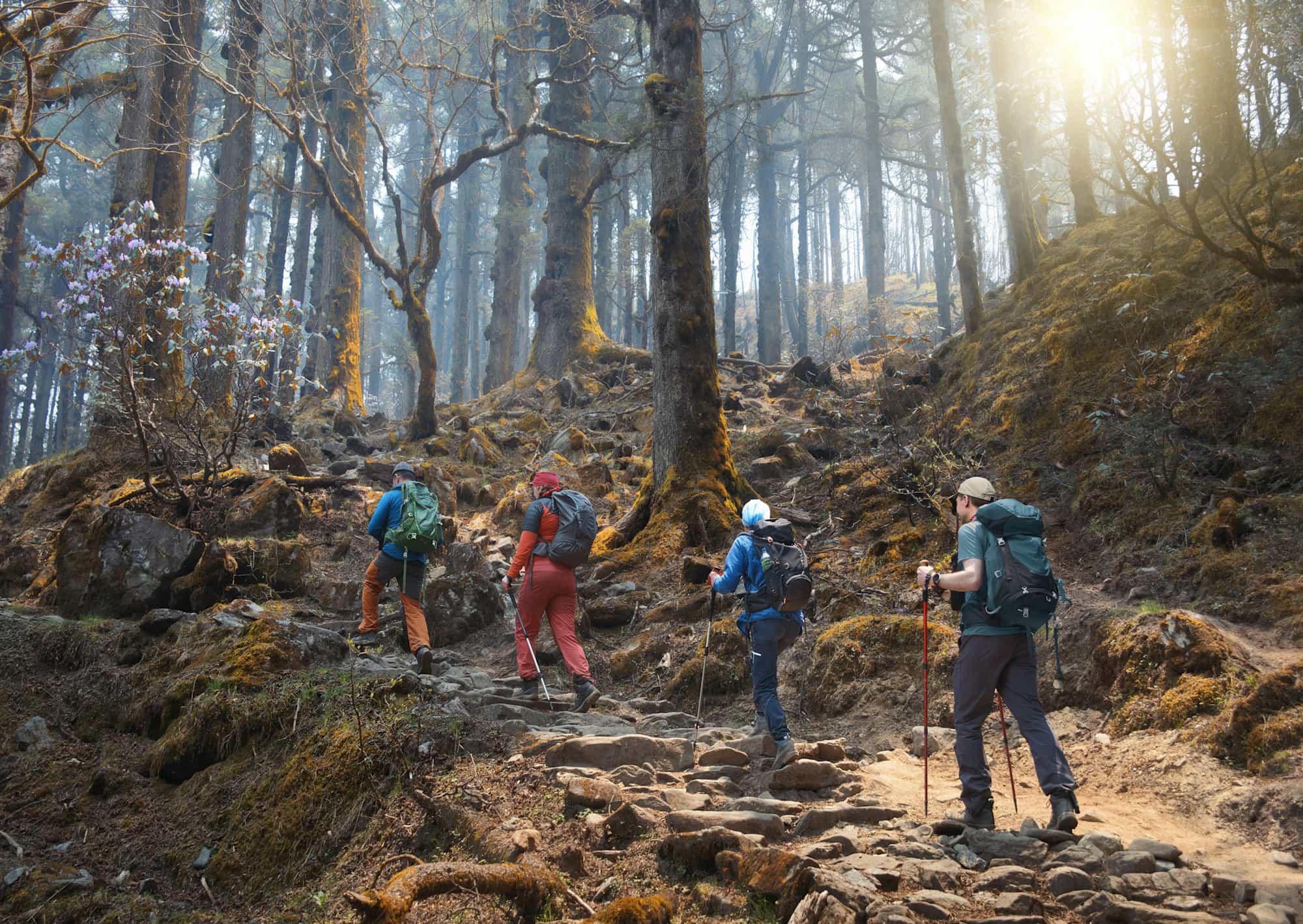
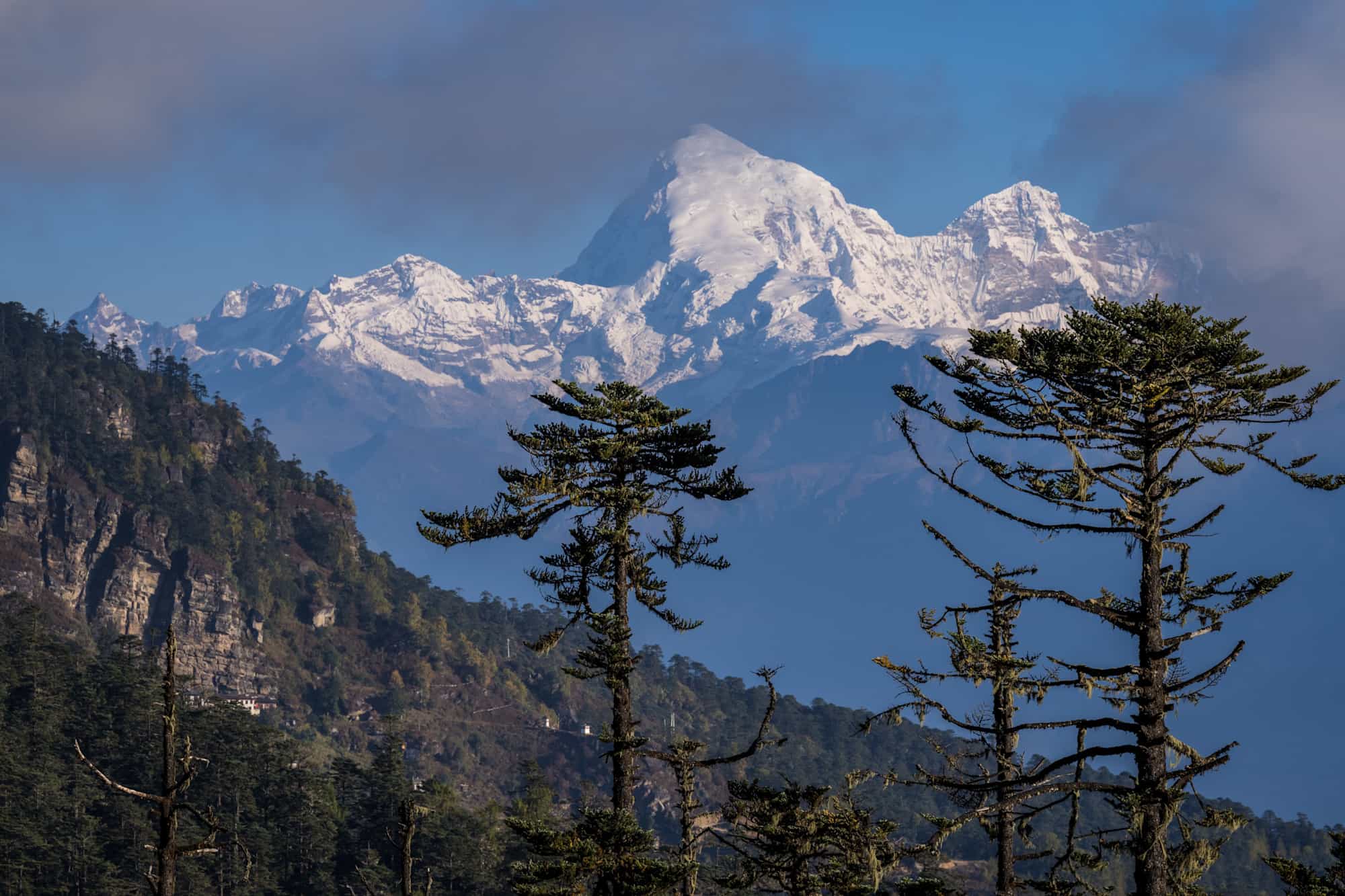
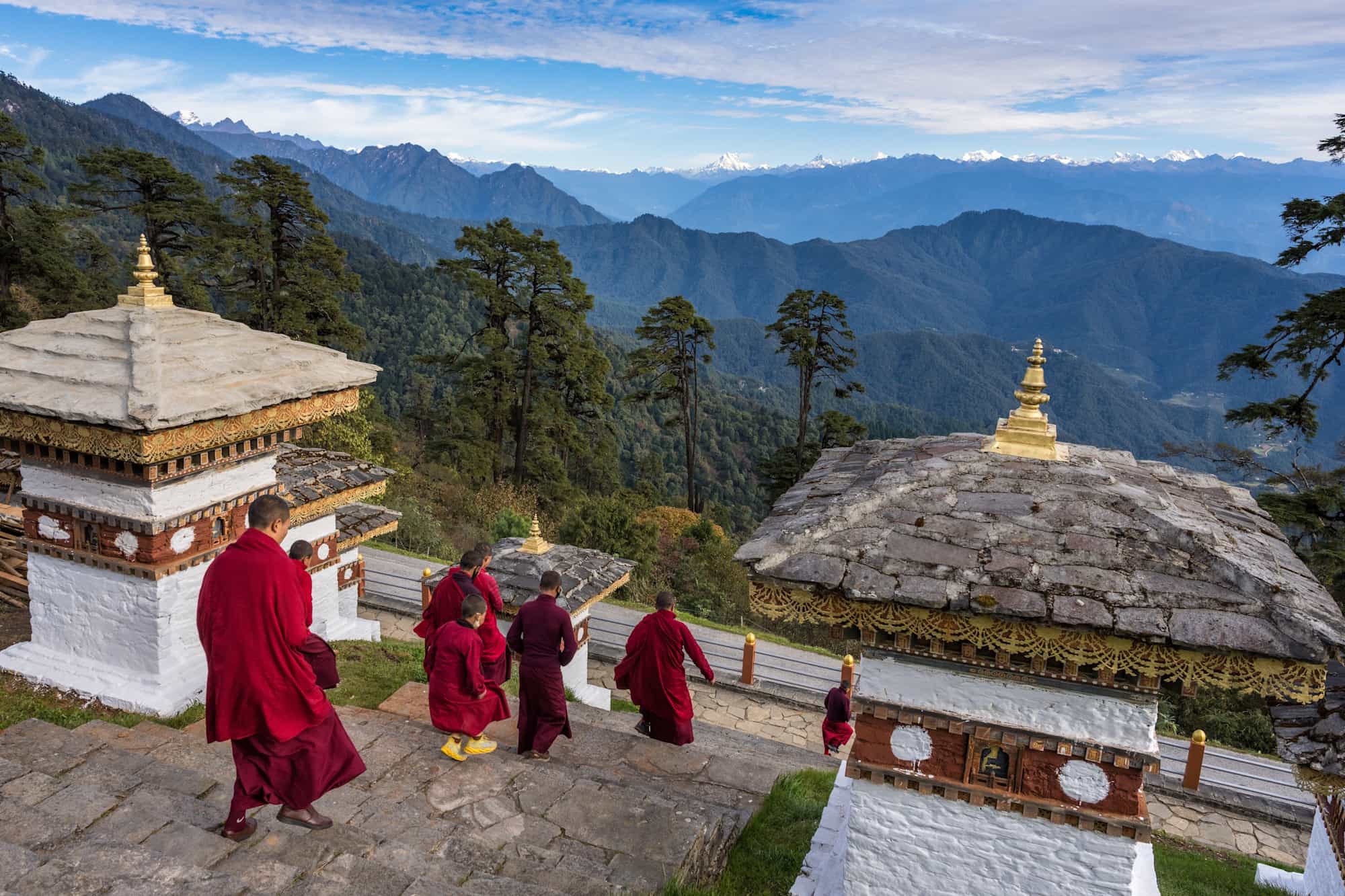
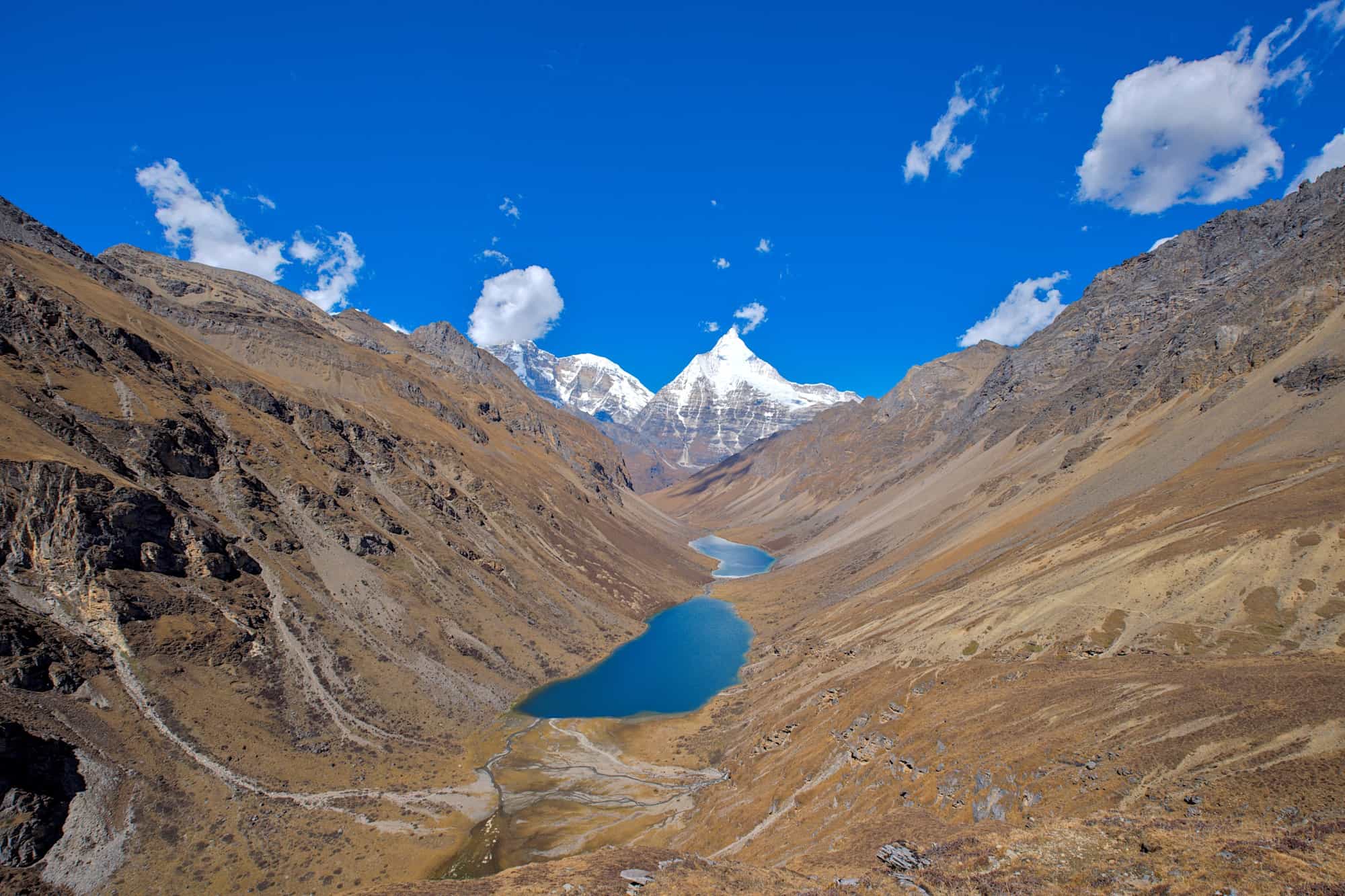
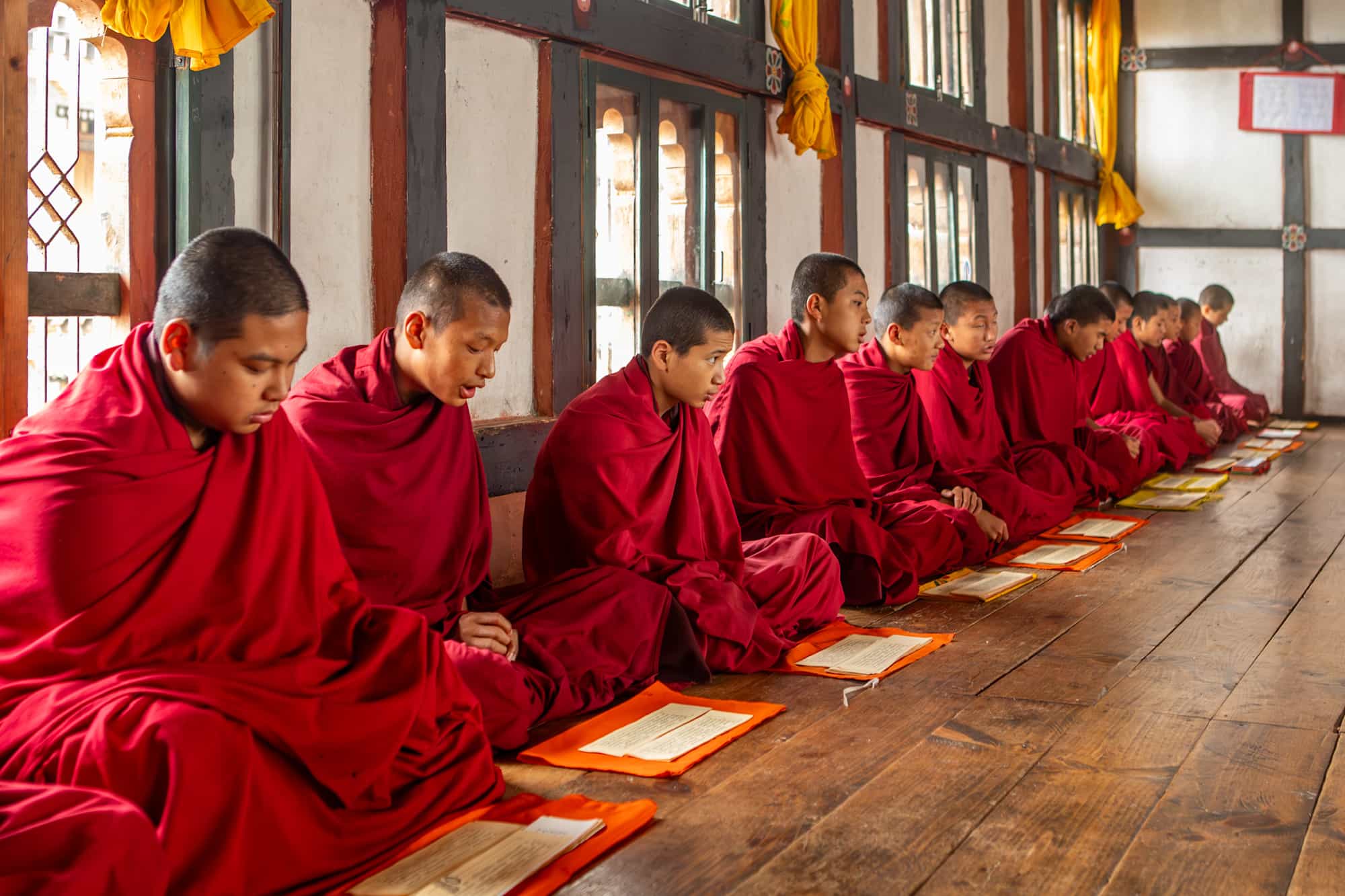
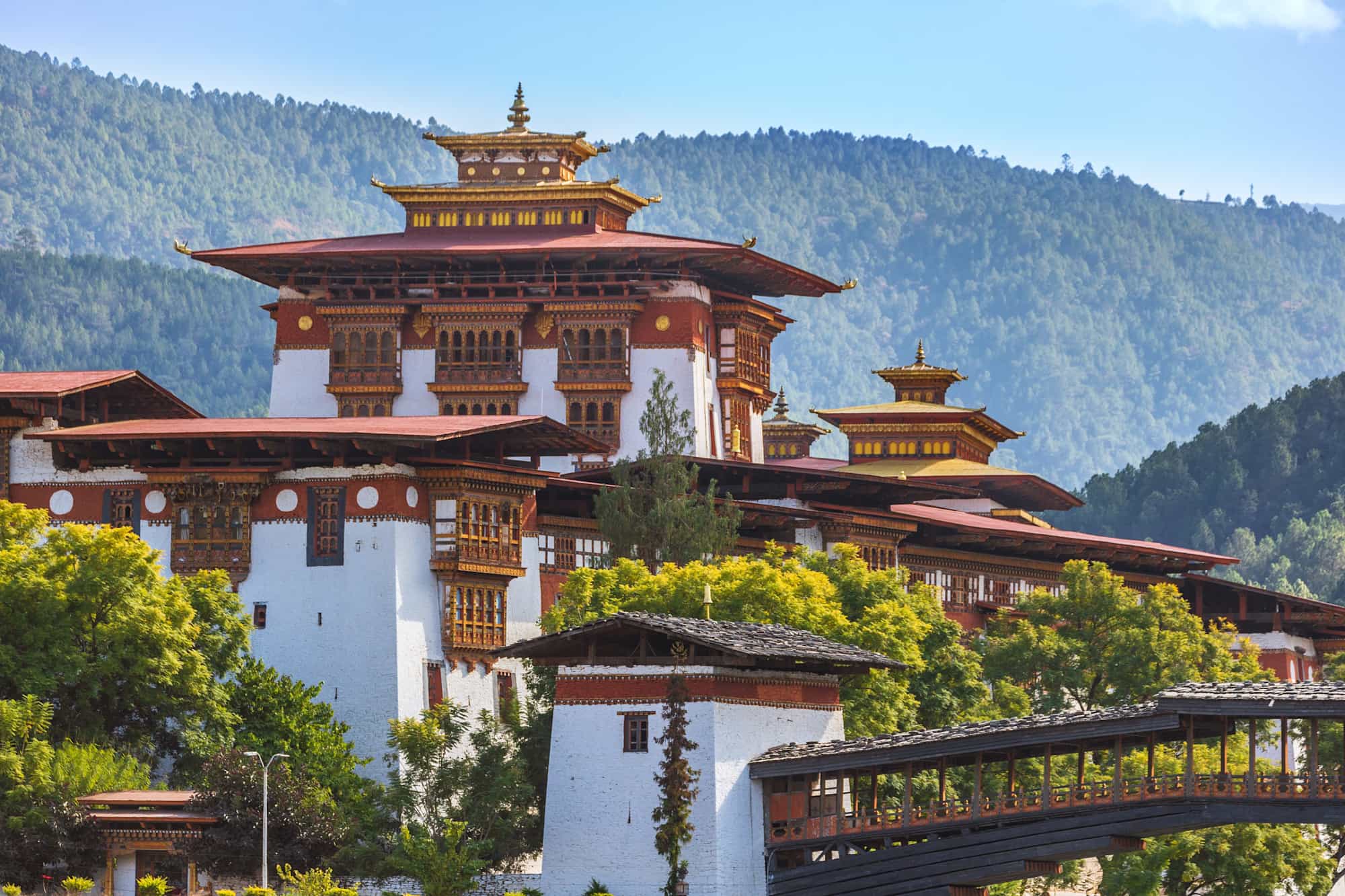
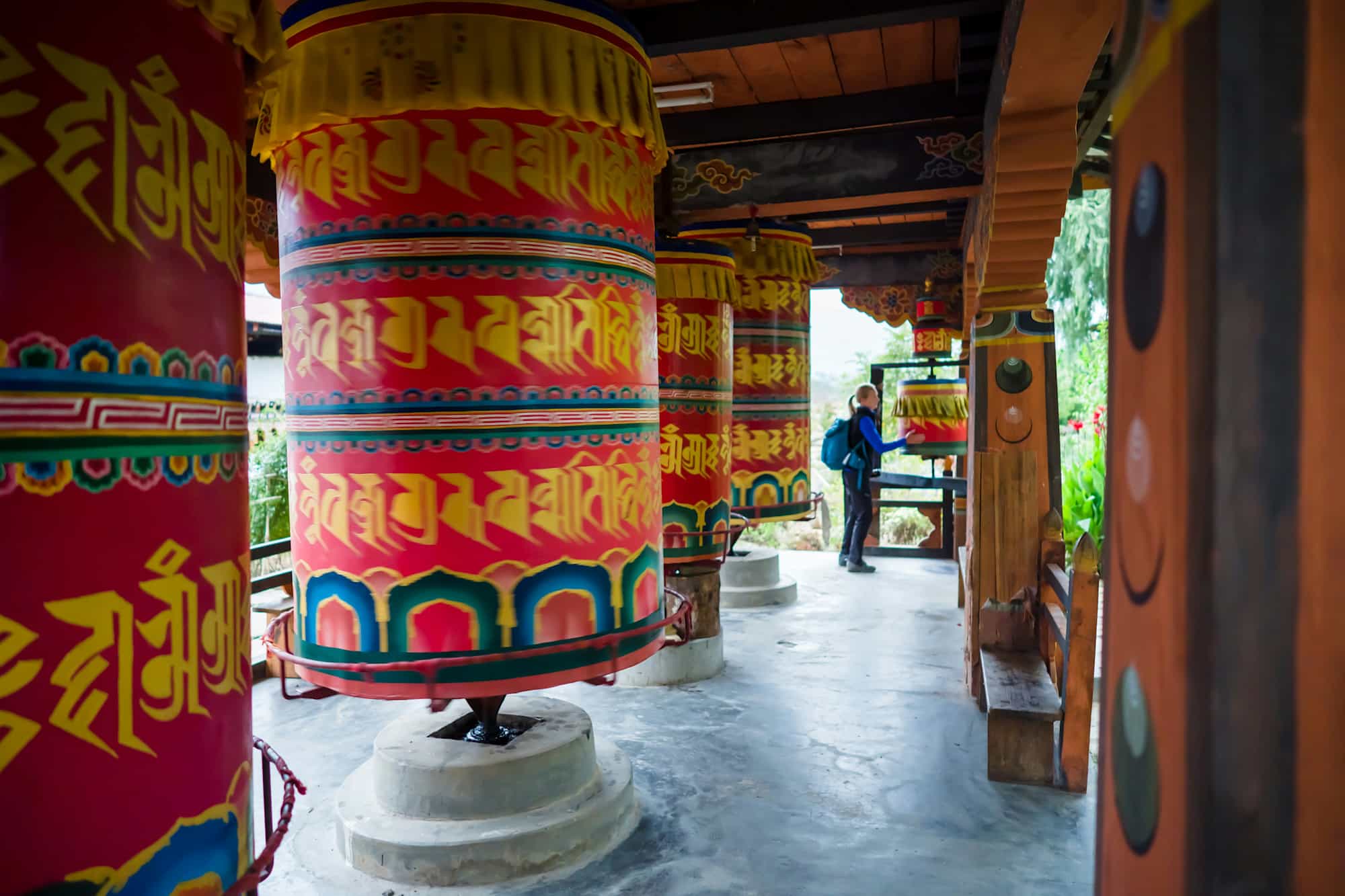
Trek the length of the ancient Druk Path from Paro to Thimpu, traversing alpine ridges and dense forests dotted with remote Himalayan monasteries
Hike to the sacred Tiger's Nest monastery, admire Punakha Dzong, and catch a glimpse of Gangkhar Puensum, the world’s highest unclimbed peak
Explore historic sections of the Trans Bhutan Trail, hiking through valleys, villages, and to hidden temples, uncovering Bhutan’s spiritual heritage
Immerse yourself in the world’s only carbon-negative country, rich in Buddhist traditions, vibrant festivals, and unique architecture
Key Information
Day 1
Step into Bhutan, the Land of the Thunder Dragon
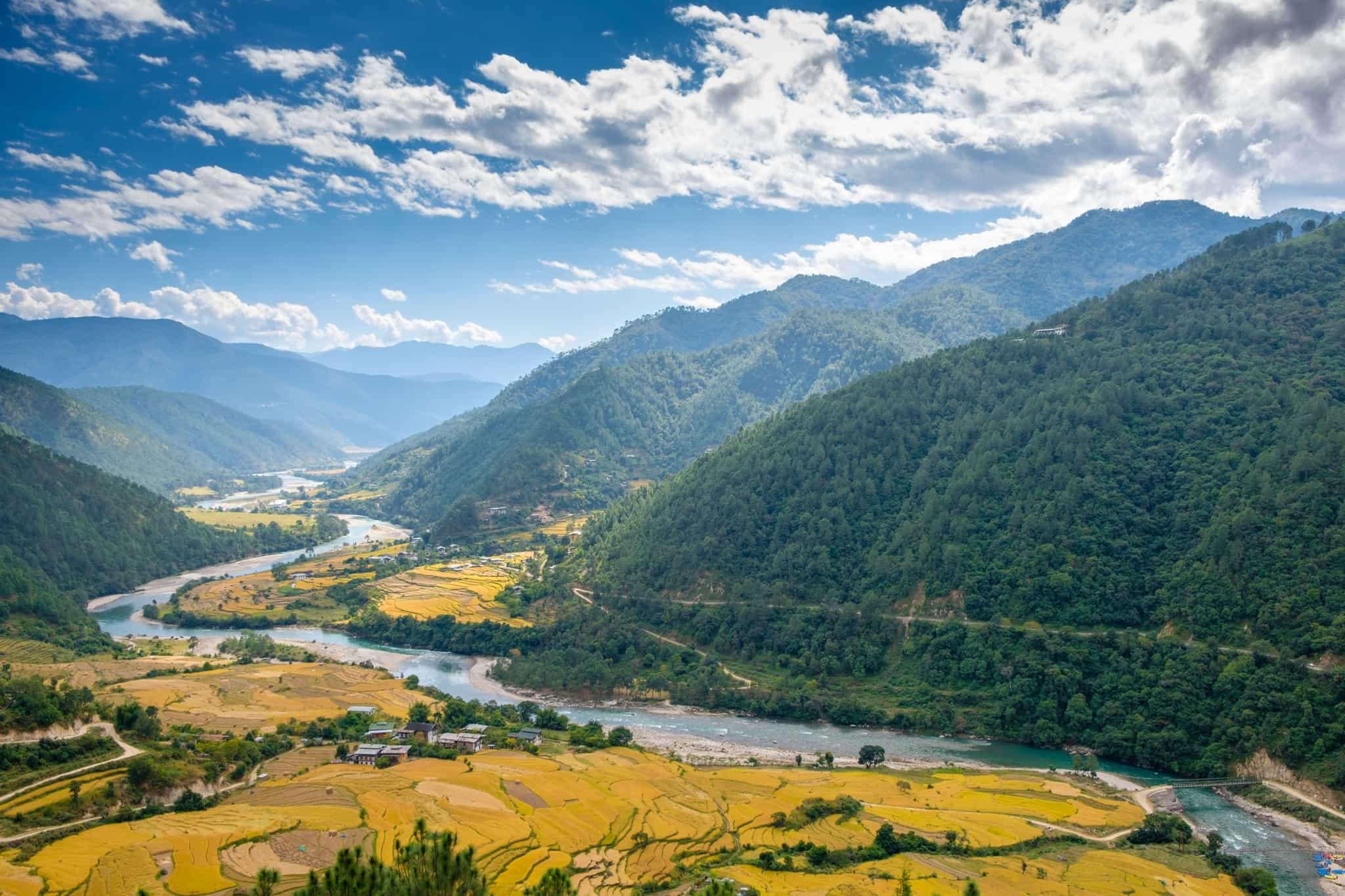
Touch down in Paro, where your local host will be waiting to greet you and transfer you a short distance into the Paro Valley to your first hotel. Today, you have the option to relax after your journey or head off with your host to explore the Paro Rinpung Dzong, an impressive 17th-century fortress whose name translates to the “Fortress on a Heap of Jewels”. Once a mighty stronghold defending the valley from Tibetan invasions, you’ll wander through its vast, colourful interiors before taking a short hike down to the traditional cantilevered bridge spanning the Paro River. Enjoy lunch at a local restaurant in Paro town, then take a stroll through its charming streets, soaking up your first insights into life in Bhutan. Back at the hotel, tuck into a Bhutanese-style dinner this evening and chat with your guides and fellow adventurers about the hiking and trekking to come.
Day 2
Hike to the incomparable Tiger’s Nest
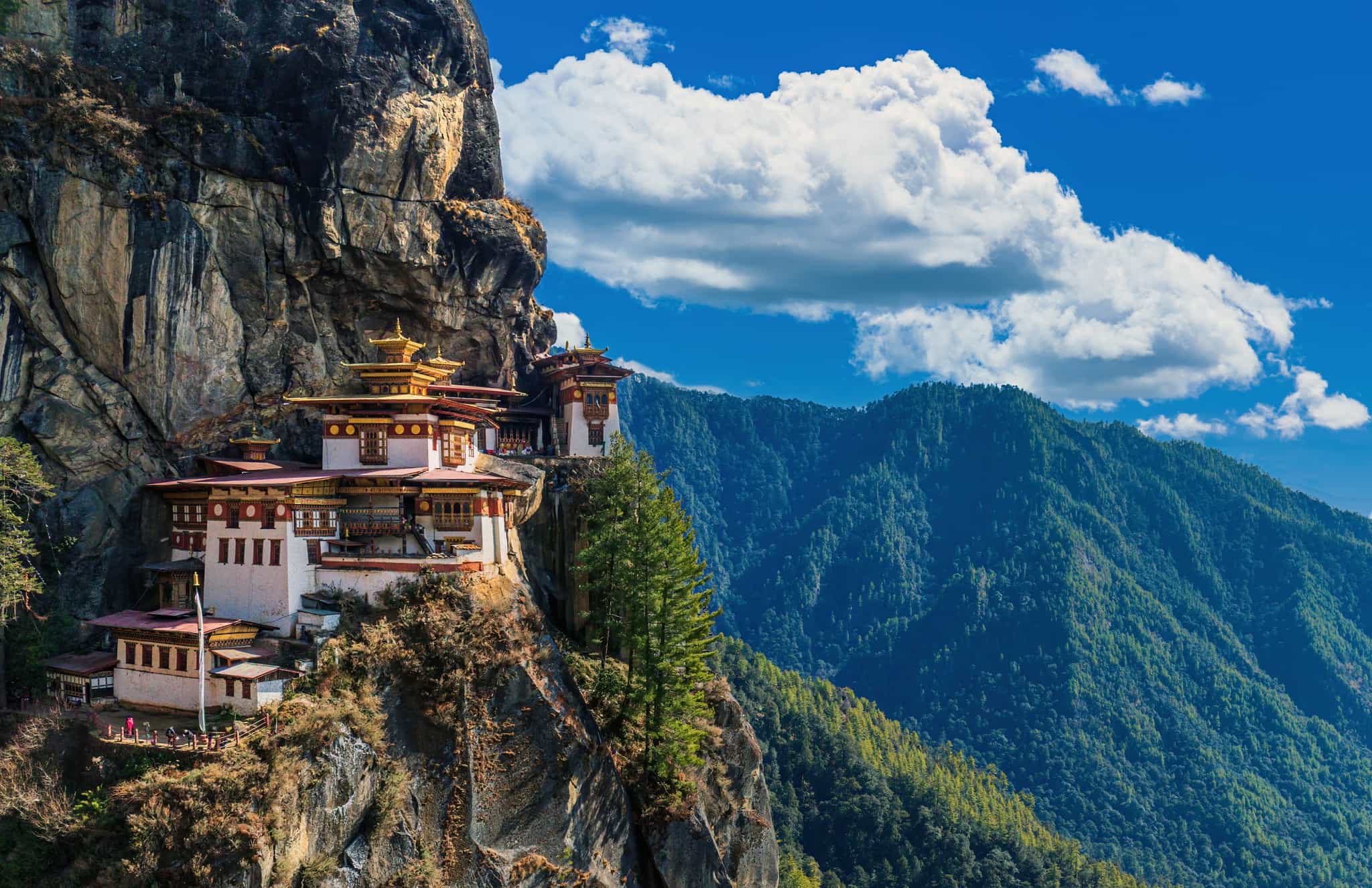
Hiking
The warm-up hike on this trip could easily lay claim to being the greatest warm-up hike on any adventure, anywhere in the world. Ever. The monastery of Paro Taktsang needs little introduction; if you’ve ever googled 'Bhutan', you’ll have seen a photo of it. Hiking to Bhutan’s famed Tiger’s Nest is a must-do for anyone visiting the country. But the hike offers far more than just that iconic viewpoint. The trail switchbacks along well-worn paths, past prayer wheels and fluttering prayer flags, gradually ascending to reveal a breathtaking panorama over the forest-cloaked expanse of the Himalayan foothills. The monastery looms above throughout, clinging impossibly to a vertical cliff face in the distance. One final set of switchbacks brings you to perhaps the Himalayas’ most famous lookout point, with the monastery perched precariously over 3000m above sea level. You’ll continue hiking up to the monastery, one of Bhutan’s most sacred sites and an active Buddhist monastery. Legend has it that Guru Rinpoche, the founder of Tibetan Buddhism, flew here on the back of a tigress in the 8th century, meditated for six months, and introduced Buddhism to Bhutan. You’re permitted to enter the monastery for a short time under the guidance of a monk, though photography inside is not allowed. After tackling the descent, you’ll visit Kichu Lhakhang, Bhutan’s oldest temple, before heading back to the hotel to rest your legs ahead of the big trek starting tomorrow.
Day 3
First steps along the Druk Path

Hiking
After breakfast, take a scenic 1.5 hour drive from your hotel to the village of Damchena, where the Druk Path trekking route officially begins. The trail starts with a steady 2.5 hour ascent through a forest of blue pine and silver birch, passing a lone mani wall – a spiritual marker covered in sacred inscriptions. Emerging above the tree line, you'll reach the Jili La Pass (3580m), offering spectacular views back over the Paro Valley. Stop to explore Jili Dzong, an impressive hilltop fortress and monastery draped in prayer flags, before continuing along a high wooded ridge lined with conifer and rhododendron forests, home to wild orchids, ferns and alpine flowers. Looking north, you’ll catch your first glimpse of Chomolhari, Bhutan’s revered snow-capped peak. Keep an eye out for yak herder settlements, where nomadic families live in traditional yak wool tents during the summer months. By evening, arrive at your first campsite in Jangchulakha, a stunning high-altitude grazing ground nestled between the Paro and Thimphu Valleys. Your trekking team will set up camp and cook a hearty dinner while you take in the surroundings ahead of your first night under canvas on the Druk Path.
Day 4
Trek through peaks, passes and alpine ridges to Jimilang Tsho
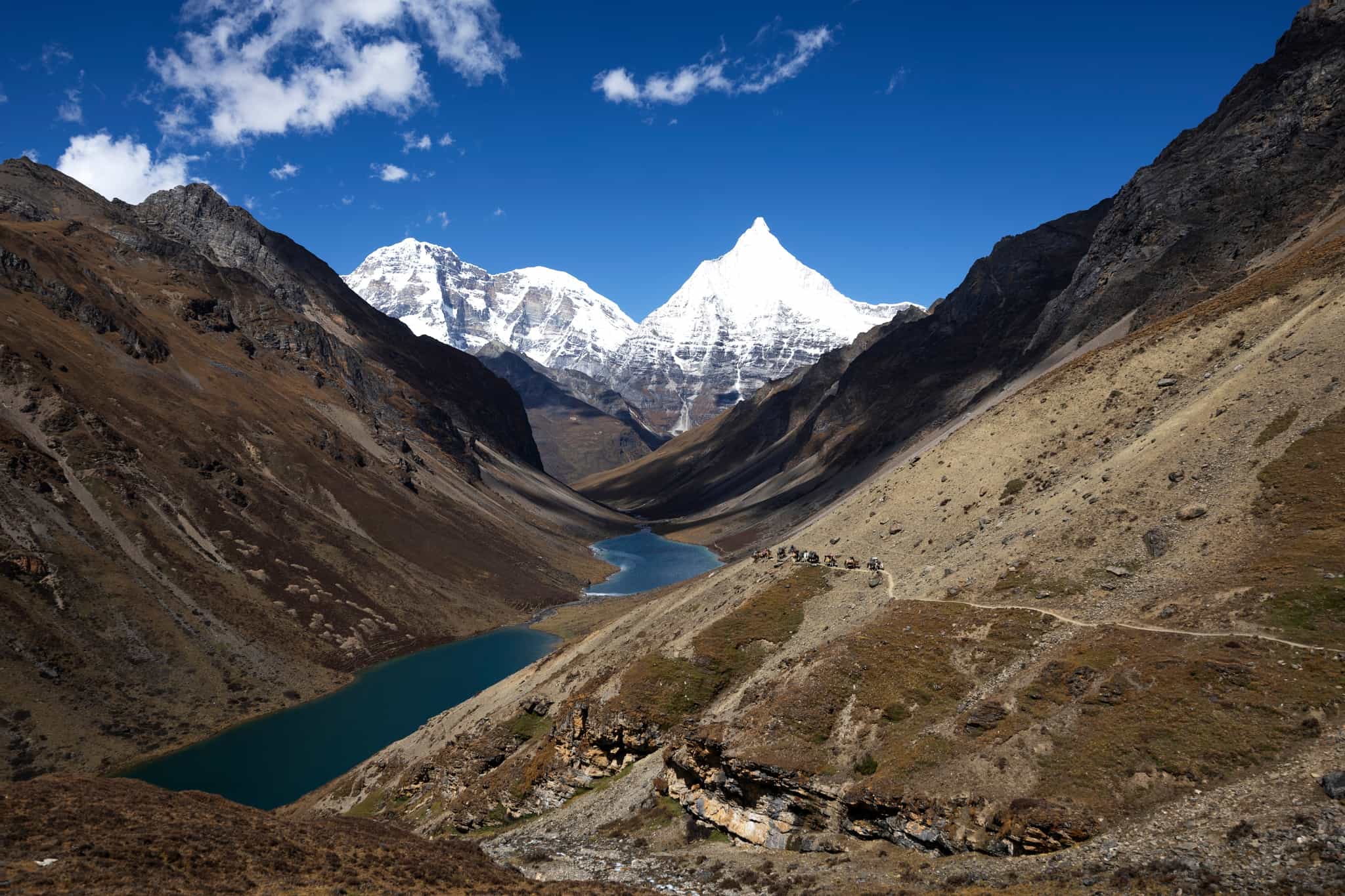
Hiking
An epic day lies ahead as you venture deeper along the Druk Path, veering north towards the high Himalaya. The trail climbs steadily for around two hours, leading to an alpine ridge with uninterrupted views of the Himalayan border with Tibet, where snow-capped peaks stretch endlessly across the horizon. Along the way, you’ll trek across a series of small passes, each at around 4050m, marked by stone memorials and colourful prayer flags fluttering in the wind. Continuing along the ridge, the remote Jimilang Tsho lake comes into view, nestled deep within the mountains, with the looming Chomolhari providing a dramatic backdrop. A final hour-long descent brings you through alpine meadows, rhododendron groves and conifer forests to this peaceful, high-altitude lake – your campsite for the night.
Day 5
Trek to Labana through yak pastures and hidden lakes
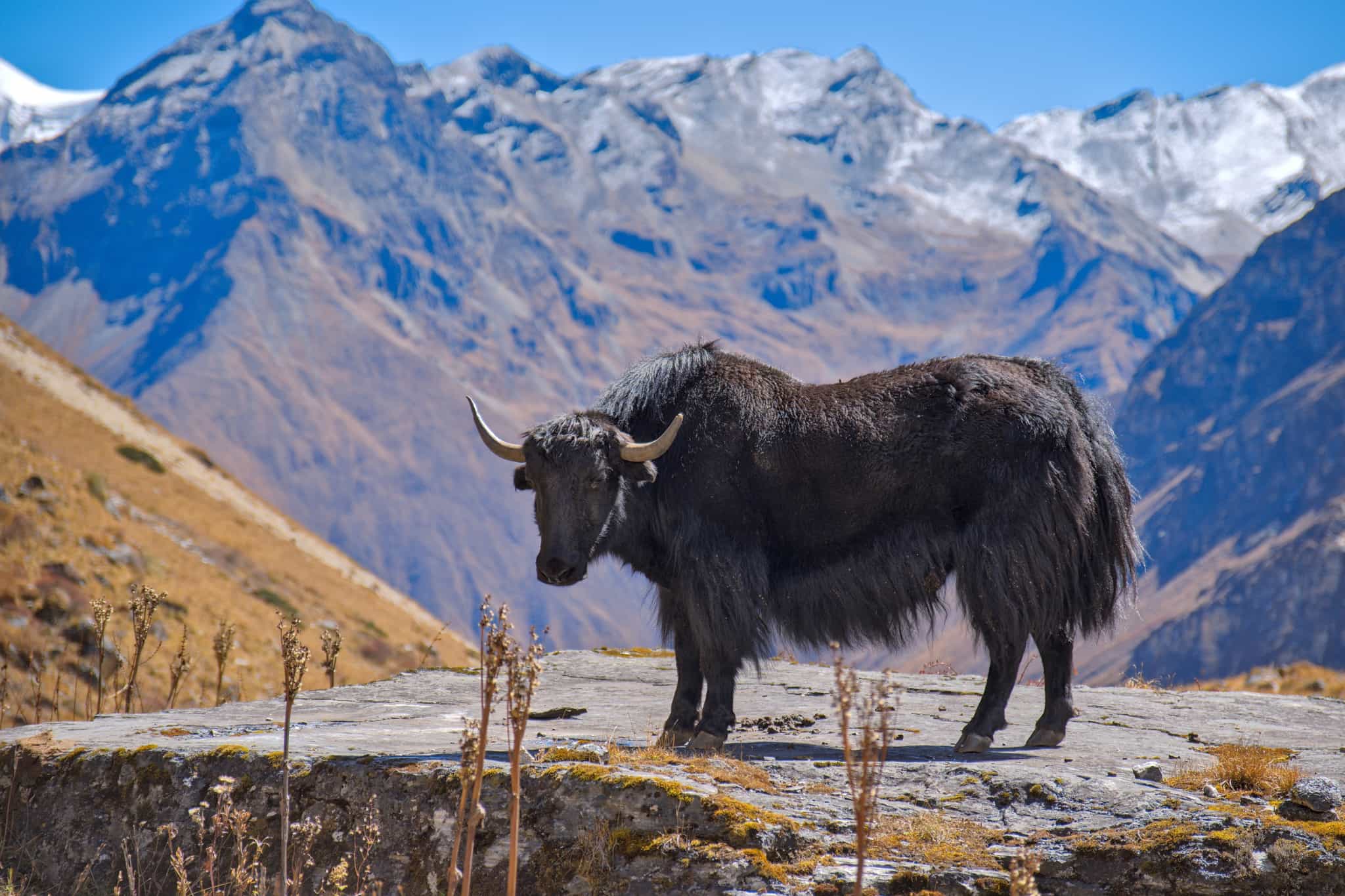
Hiking
Savour a final moment at the serene Jimilang Tsho Lake this morning before continuing the trek through forests of juniper and dwarf rhododendron, eventually crossing a series of yak-grazing meadows. After roughly three hours, arrive at the secluded encampment of Janye Tsho (3950m) – an ideal spot to rest and soak up the mountain stillness. From here, the trail continues with short ascents and descents, passing Simkotra Tsho Lake, where you can look back at Jili Dzong and the ridge you trekked along earlier. The scenery remains pristine, with expansive mountain vistas and remote wilderness in every direction. By late afternoon, you’ll reach Labana, a yak herders' campsite dotted with small alpine lakes. Just ahead lies Pumo La, the highest point of your trek, which you’ll tackle tomorrow.
Day 6
Descend to the capital Thimphu
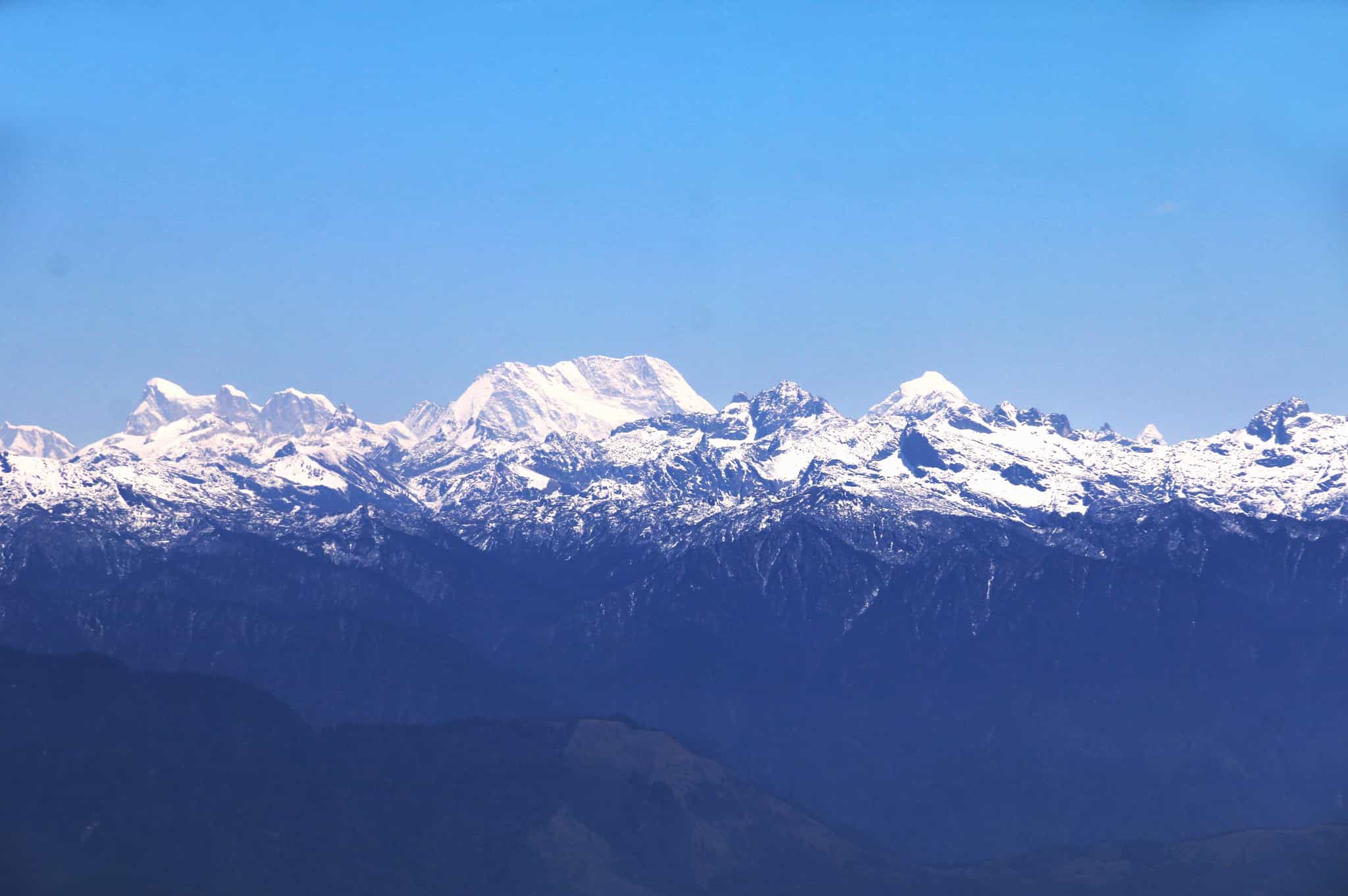
Hiking
Roll out of your tent and fuel up with breakfast and coffee at camp, ready for the final stretch of the Druk Path. Your day begins with a climb to Pumo La Pass (4200m) – the highest point on this ancient trail linking Paro to Thimphu. From the top, take in a panoramic view over the Thimphu Valley in one direction and, if the skies are clear, the vast sweep of the Himalaya in the other. Gangkar Puensum – the highest unclimbed mountain on Earth – may even make an appearance. The trail then descends towards the capital, winding past more alpine lakes and yak herder settlements as you soak up the last of Bhutan’s remote highlands. You’ll pass Phajoding Goemba, a sacred 12th century monastery and a revered pilgrimage site. From here, it’s a steep two-hour descent through mixed forest to Motithang, where your trek ends. Your host will be waiting to transfer you to your hotel in Thimphu ready with hot showers, a real bed, and a well-earned rest.
Day 7
Hike the 'Divine Madman Trail' section of the Trans Bhutan Trail
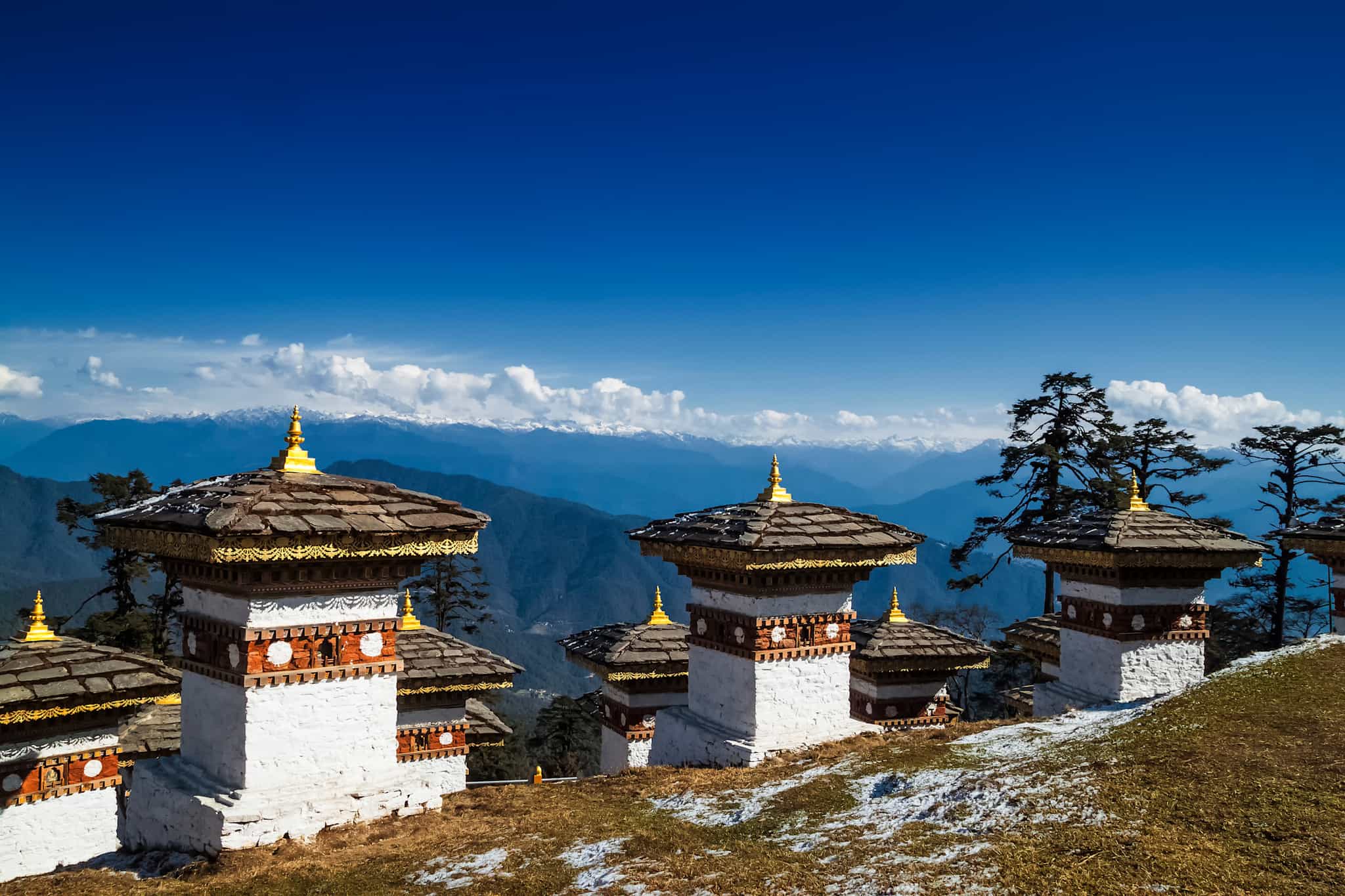
Driving
Hiking
After breakfast, you'll bid farewell to Bhutan’s capital and take a short drive into the warmer Punakha Valley. About 45 minutes in, you'll reach Dochula Pass, a mesmerising spot at 3100m, offering incredible views of the Himalaya. The pass is adorned with 108 chortens, built in memory of Bhutanese soldiers. From here, you’ll begin hiking a section of the Trans Bhutan Trail, an ancient pilgrimage and trading route that once connected Haa in the far west with Trashigang in the east. You'll descend into the neighbouring valley to pick up a stretch known as the 'Divine Madman Trail'. This path retraces the journey of Drukpa Kuenley, the 16th-century Buddhist monk known as the Divine Madman, who travelled from Tibet to Bhutan on a mission to dispel negative energy. The trail winds through rice paddies, traditional villages and dense forest, with colourful prayer flags fluttering overhead and sweeping views across the valleys. Along the way, you’ll stop at Chimi Lhakhang, the famous fertility temple dedicated to the Divine Madman himself. Expect bold murals, Bhutan’s distinctive phallic symbols, and monks offering blessings to visitors in search of good fortune. After about four hours of hiking, you’ll arrive in Thinleygang for lunch at a farmhouse, before continuing by road to Punakha. Settle into your hotel and tuck into a traditional Bhutanese dinner.
Day 8
Further on along the Trans Bhutan Trail
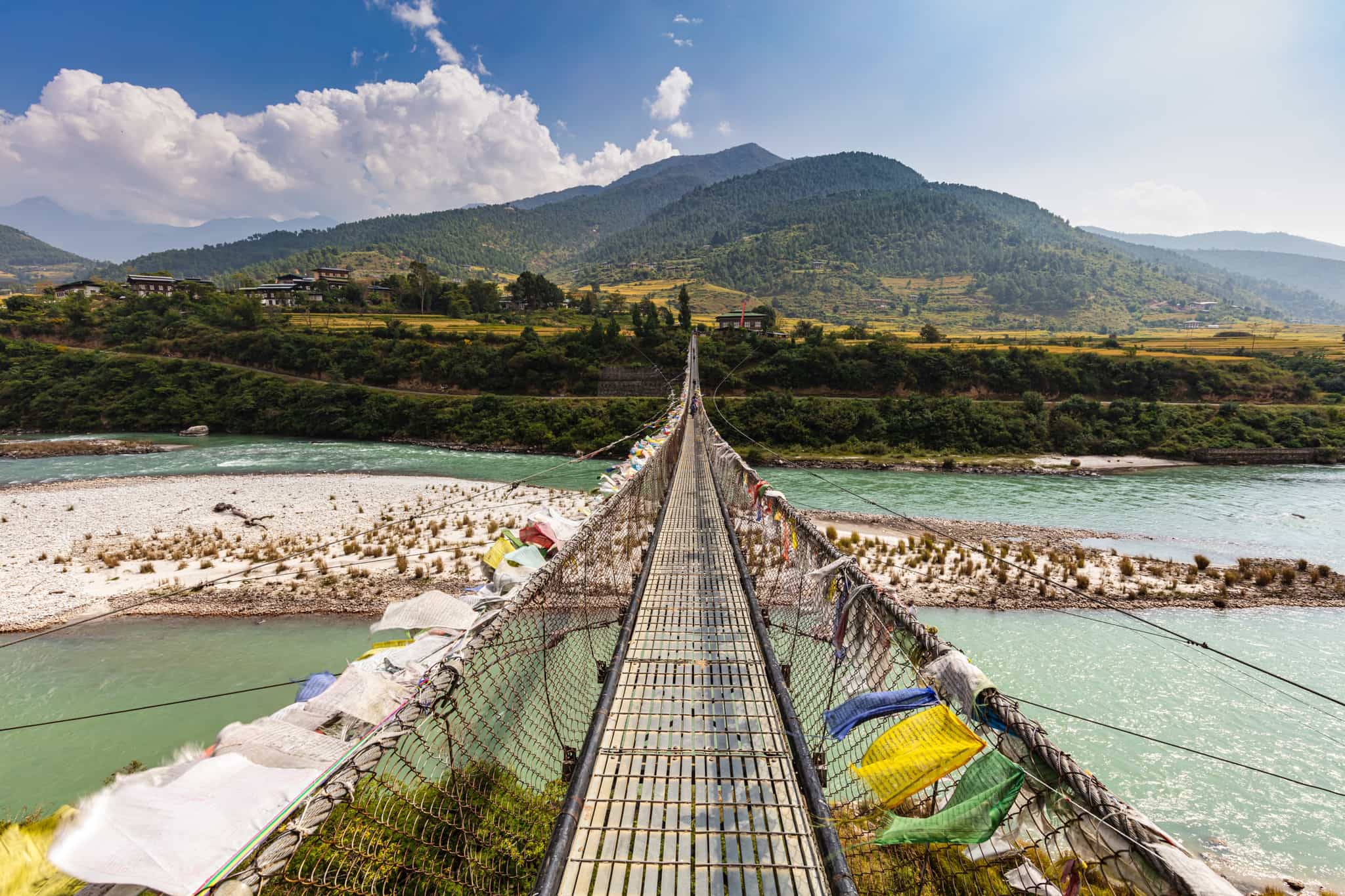
Hiking
Another awesome day lies ahead as you tackle a beautiful hike to Khamsum Yulley, a gentle yet rewarding climb that winds through rice terraces, pine forests and traditional farmhouses. As you ascend, the valley opens up, revealing the Mo Chhu River meandering below and the rolling foothills of the Himalayas in the distance. The final trail leads to Khamsum Yulley Namgyal Chorten – a striking temple perched high on a ridge, built to promote peace and harmony across the world. Step inside to admire its intricate Buddhist murals, then climb to the rooftop for a jaw-dropping panoramic view of the Punakha Valley, easily one of the best in Bhutan. From here, you'll head back to Punakha to hike another section of the Trans Bhutan Trail, heading to Sew Dangsa, a clearing adorned with prayer flags where monks often stop for lunch. A final descent brings you to one of Bhutan’s most extraordinary sights, Punakha Dzong. This architectural masterpiece is nestled between the Pho Chhu and Mo Chhu rivers. The sheer scale can only truly be appreciated in person, and the sight of practising monks in the various elaborately painted rooms and courtyards is a magical experience.
Day 9
One last hike in the Haa Valley
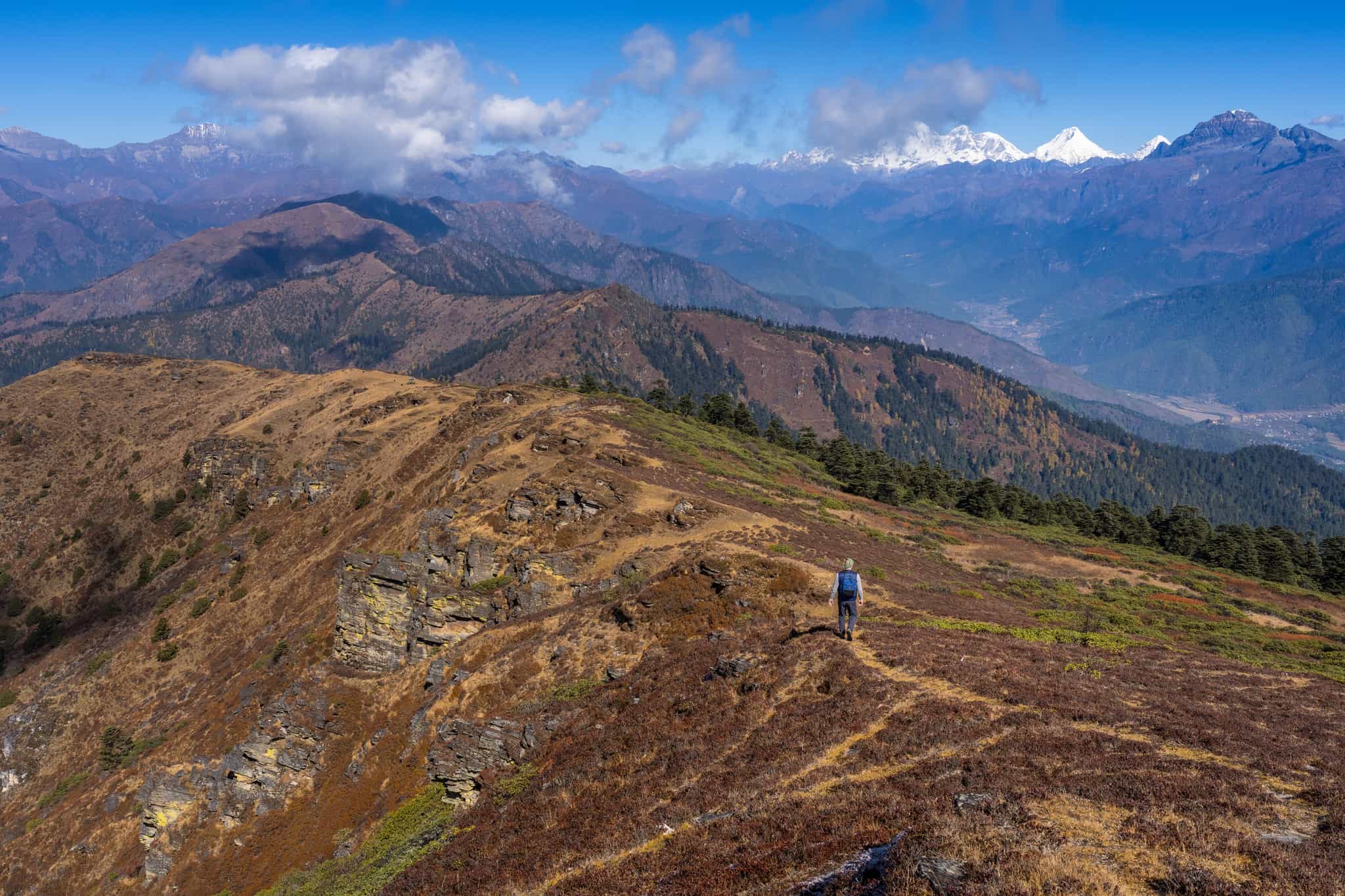
Hiking
Your final day in Bhutan takes you into the Haa Valley – one of the country’s most untouched regions and recently named one of the ‘25 Best Places to Travel in 2025’ by the BBC. Known for its pristine landscapes, rich cultural heritage and commitment to sustainable tourism, Haa remains one of Bhutan’s best-kept secrets. You’ll explore its historic temples, including the legendary White and Black Temples, before sitting down to enjoy a traditional Bhutanese lunch. Then it’s time to lace up your boots for the Kila Goenpa hike, a peaceful trail that winds through alpine forests and along ridgelines. Perched dramatically on a cliffside, Kila Goenpa - or the ‘Nunnery of Peace’ - is one of Bhutan’s oldest nunneries, offering magnificent views over both the Paro and Haa valleys. It’s a short hike to round off your trekking adventures in this magical Himalayan kingdom, with fluttering prayer flags and crisp mountain air adding to the spiritual atmosphere. After soaking in the views, you’ll return to Paro in the late afternoon. Tonight, celebrate your final evening in Bhutan with a farewell dinner, reminiscing about your adventures over a well-earned meal with your guide and driver.
Day 10
Farewell Bhutan!
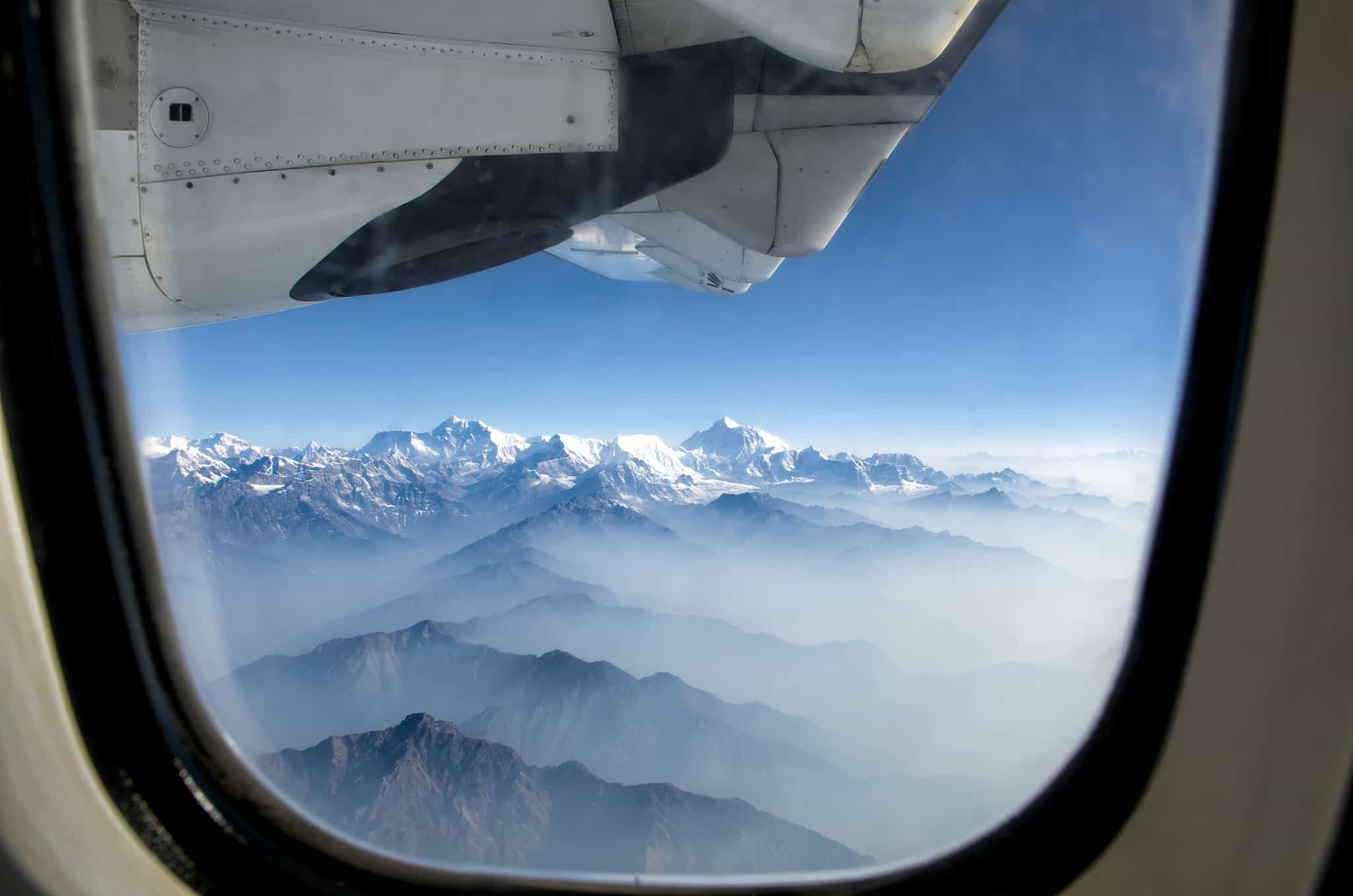
After breakfast, your guide and driver will transfer you to Paro Airport for your departure. As you take off, savour the final glimpses of Bhutan’s misty mountains, peaceful valleys and prayer flags, a fitting farewell to this magical Himalayan kingdom.
The Area
Logistics
Starts
Paro Airport (PBH)
Anytime on Day 1
Ends
Paro Airport (PBH)
Anytime on Day 10
Transfers
Your Bhutan adventure begins and ends at Paro International Airport (PBH), the country’s only international airport, nestled in the heart of the Paro Valley. From here, you’ll be whisked away a short distance to your first night’s stay in the Paro Valley before starting your hiking adventures the next day. On Day 10, your host will return you to Paro Airport in time for your onward flight home.
Fun Fact! Paro Airport is known for being one of the most challenging airports to land at in the world. The runway is just 1.9 kilometres long and surrounded by steep mountains, so pilots require special training to navigate the approach. Only a handful of the most skilled pilots are certified to land there. The route also has some astonishing views of the Himalayas, including Mount Everest in neighbouring Nepal & Tibet.
Travel options
Paro International Airport is easily accessible by air from several international hubs. The most common routes to Paro International Airport are from Kathmandu (Nepal), Bangkok (Thailand), and Delhi (India), with flights operated by Druk Air and Royal Bhutan Airlines. There are also some options from Dubai and Mumbai. Remember to check if you require a visa for transiting through or stopping over at one of these hubs (for example, an Indian visa is required if travelling via Delhi). North American travellers can fly direct to Dubai, Mumbai and Delhi to pick up the onward flight to Paro to reach Bhutan with just two flights. You'll need to book your flight into Bhutan itself from any of the hubs mentioned above directly with Druk Air or Bhutan Airlines, which is as straightforward as with any other major airline on their respective websites:
www.drukair.com.bt
www.bhutanairlines.bt
Please note that depending on your international flight times into Kathmandu, Bangkok or Delhi, you will likely need to overnight at one of these hubs before catching your flight to Paro the next morning. This must be arranged independently, so make sure to plan accordingly.
Day 1
Breakfast
Lunch
Dinner
Day 2
Breakfast
Lunch
Dinner
Day 3 – Day 5
Breakfast
Lunch
Dinner
Day 6 – Day 9
Breakfast
Lunch
Dinner
Day 10
Breakfast
Lunch
Dinner
What is the food like?
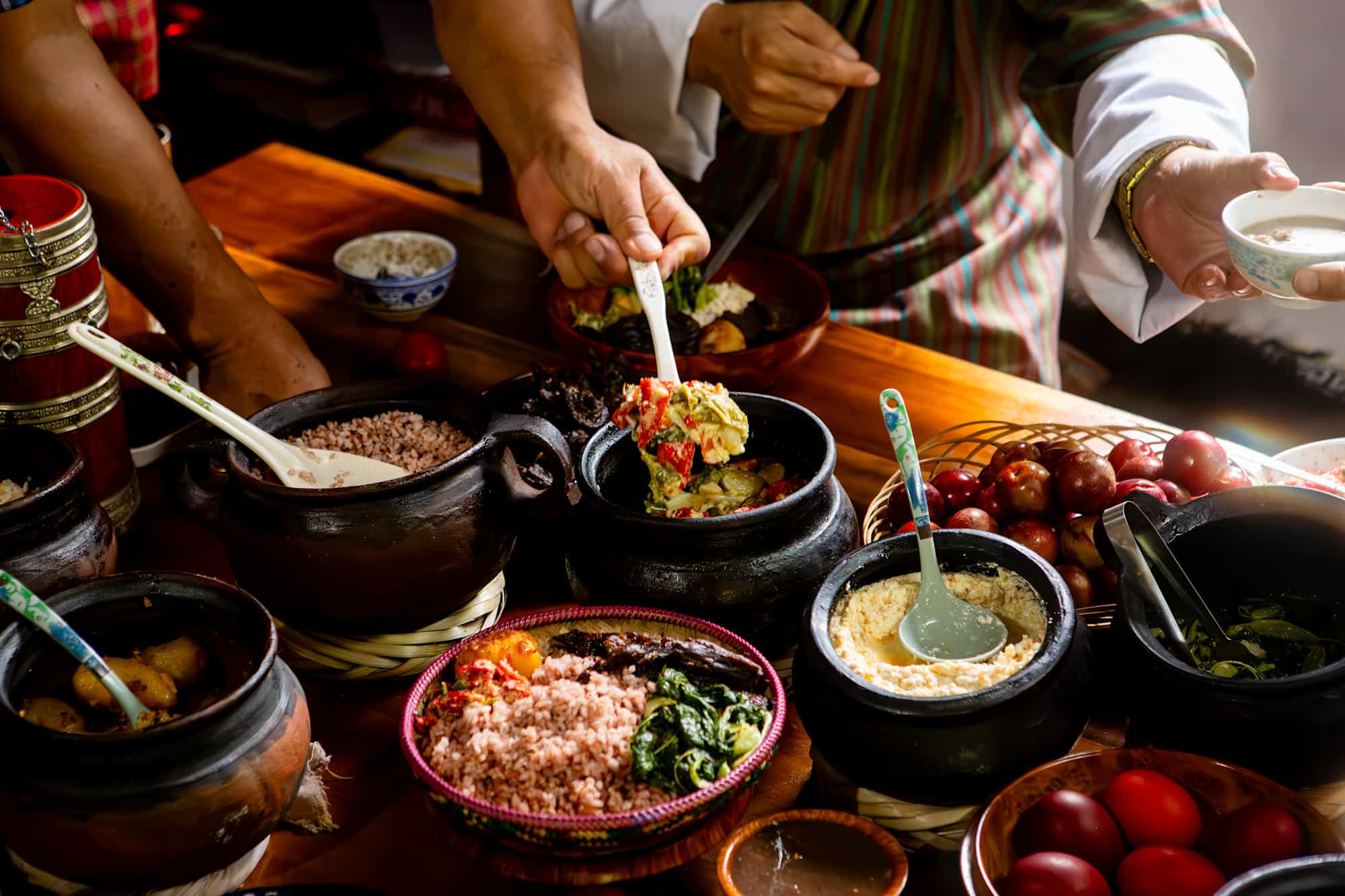
Bhutanese food is all about bold flavours, local ingredients, and a serious love for spice. Expect plenty of chillies, heaps of red rice, and delicious home-cooked dishes. The country’s national dish, Ema Datshi, is a fiery mix of chillies and yak cheese - you’ll find different variations featuring potatoes, mushrooms, or even dried yak meat.
While trekking the Druk Path, expect hearty, energy-packed meals prepared by your trekking crew. Breakfasts usually include porridge, toast, eggs, pancakes, or Tibetan-style flatbreads, served with tea or suja (butter tea) for an extra warming kick. Lunches and dinners are hot, wholesome, and packed with local flavours. Think steaming rice with lentils, stir-fried veggies, and Ema Datshi (the famous chilli and cheese dish). You’ll also get noodle soups, dumplings (momos), and occasional meat dishes like dried yak or chicken. Snacks on the trail include biscuits, dried fruit, and Bhutanese sweets to keep you going between climbs. In the evenings, a hot cup of tea or a bowl of soup is always on hand to warm you up before bed.
Before and after the trek, your meals will be taken at your hotels or local restaurants. Expect fresh, organic, and locally sourced dishes, with farm-to-table ingredients straight from Bhutan’s valleys.
Vegetarians, vegans and other dietary requirements and allergies can be catered for – please just request this on your passenger info form.
What is the accommodation like?
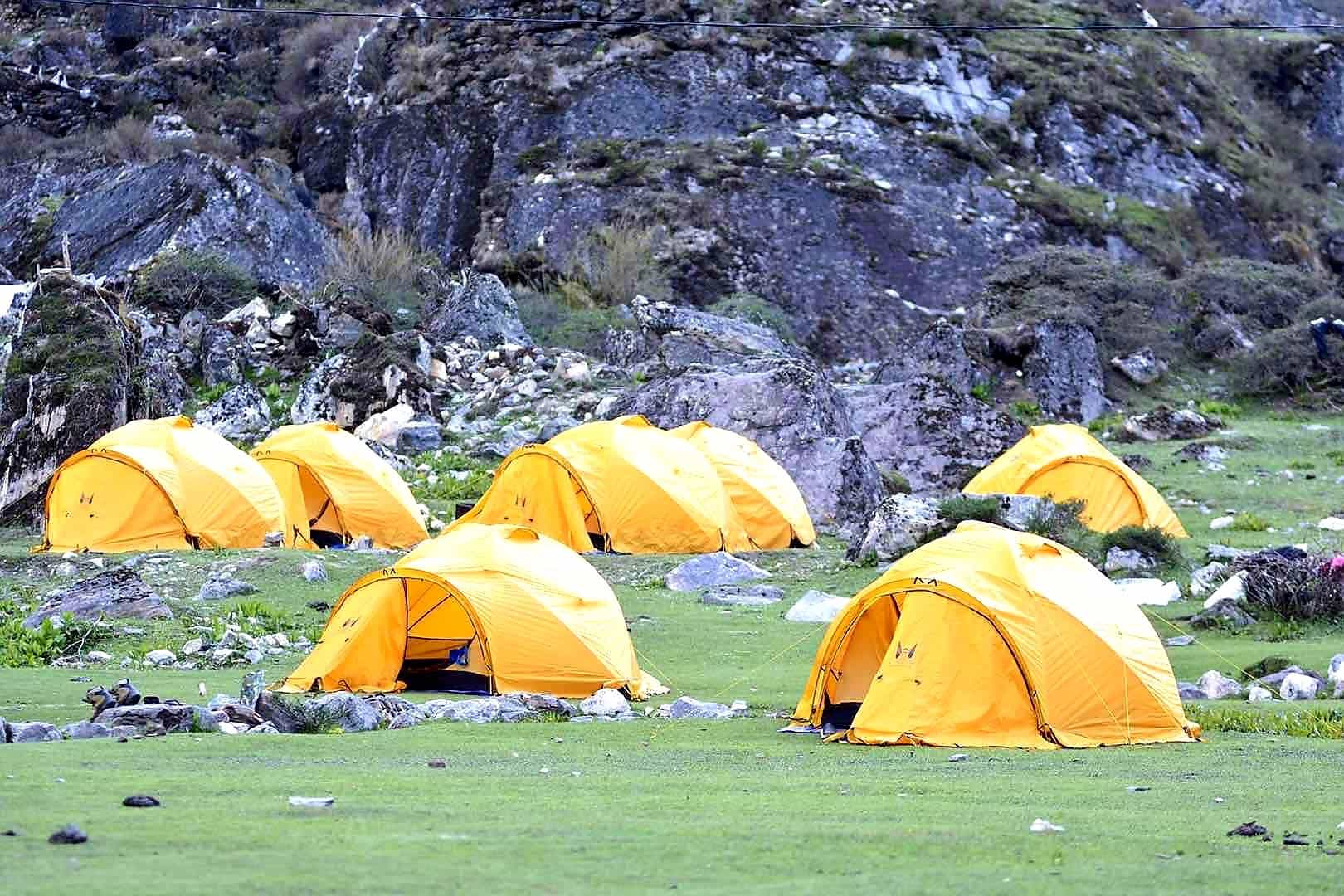
Camping along the Druk Path trek
You'll camp for 3 consecutive nights along the route of the Druk Path, an amazing experience sleeping out in the wilderness surrounded by the Himalayas. The locations you'll stay at are:
Jangchulakha (3780m)
Jimi Langtsho (3870m)
Labana (4,130m)
The trek is fully supported by a trekking team and pack animals such as donkeys, horses and yaks used to transport the group's camping equipment. You'll stay in twin-share Marmot expedition tents, with inflatable mattresses, 4 season sleeping bags and pillows included in the trip cost. A group mess tent is also provided, plus a toilet tent and shower facilities as well.
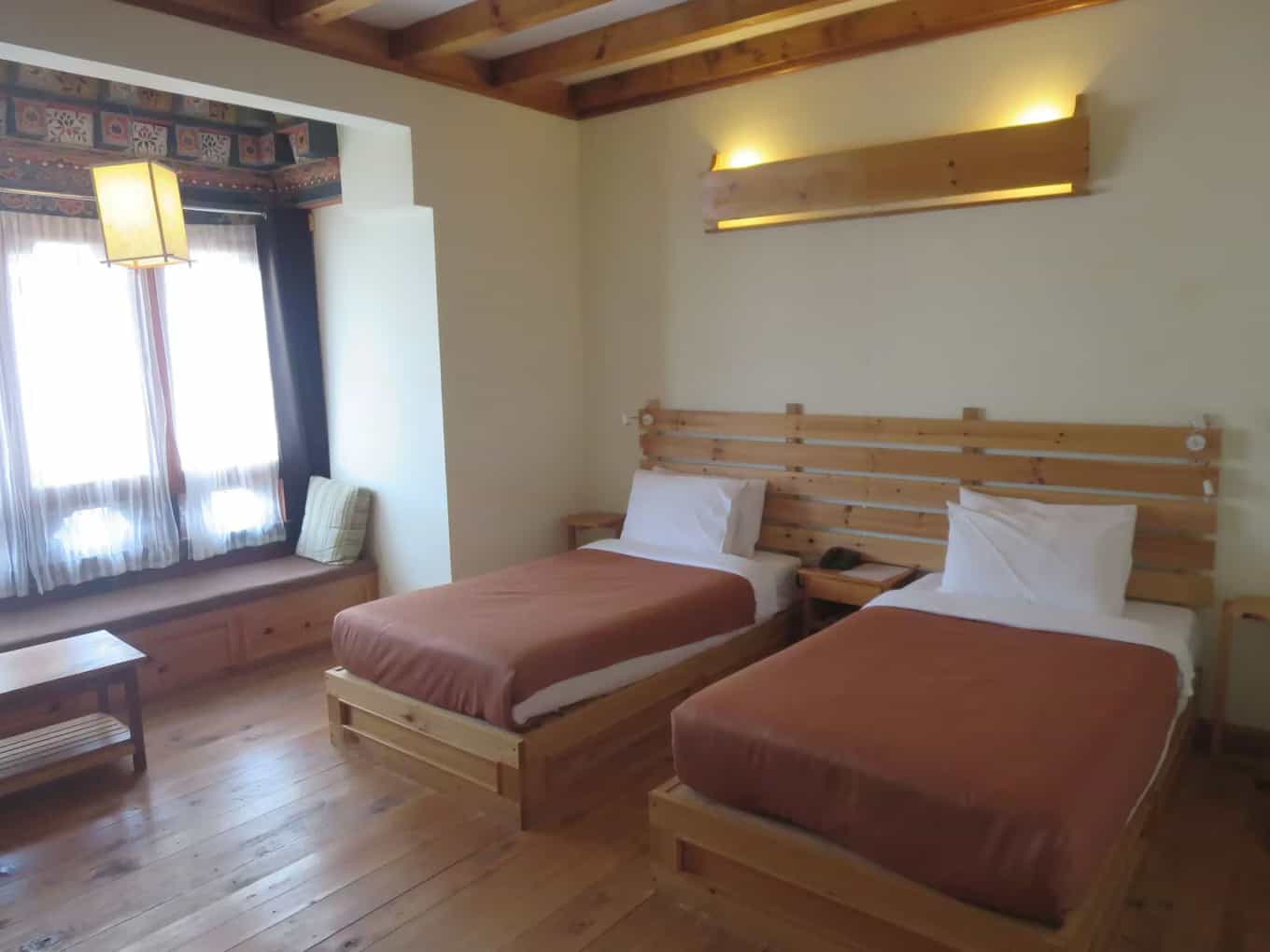
Punakha
In Punakha, you'll stay at the Hotel Vara. A cosy, friendly hotel in an elevated location with views of traditional Bhutanese houses surrounded by expansive paddy fields. You'll stay in twin-share rooms with ensuite bathrooms.
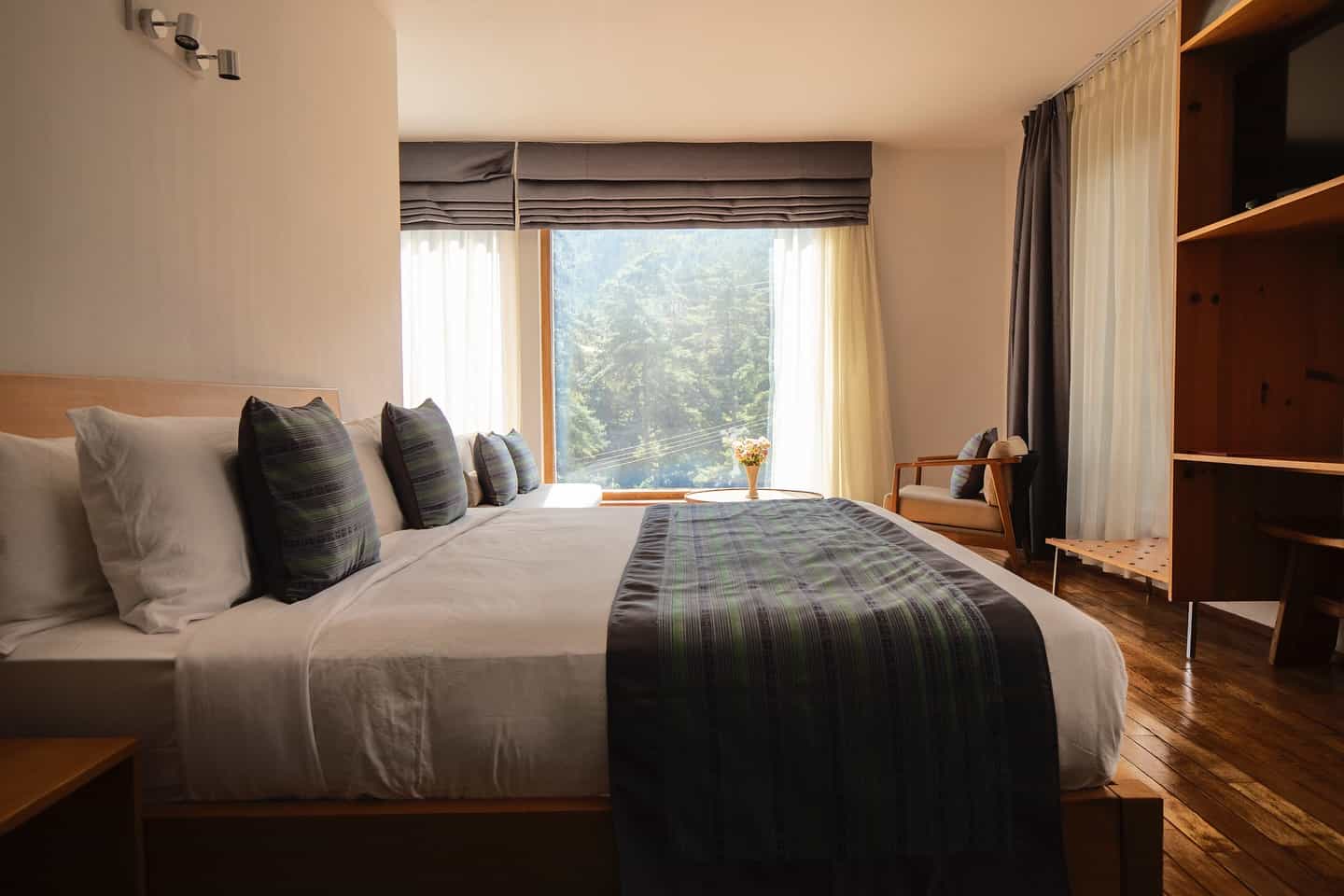
Thimphu
In Bhutan's capital, having completed your Druk Path trek, you'll spend one night at Zhiwaling Ascent, a serene retreat amid 25 acres of lush parkland. The rooms have natural wood floors and ceilings and minimalist décor accented by Bhutanese textiles. There's a well regarded restaurant and a rooftop bar with 360-degree views of the Thimphu valley and the surrounding Himalayan peaks. You'll stay in twin-share rooms with an ensuite bathroom.
Janka Resort
Nestled in the serene surroundings of Paro Valley, Janka Resort offers a peaceful retreat for your first two nights and your final night of the trip. It has a blend of traditional Bhutanese architecture with modern amenities. The rooms have a cosy atmosphere with locally crafted wooden furniture and traditional decor. There's a rustic lounge with a fire and a restaurant with Bhutanese and international dishes. There is Wi-Fi at the resort, should you need contact with the world away from Bhutan! You'll stay in twin-share rooms with an ensuite bathroom.
Upgrades
For solo travellers looking for their own space, an optional private room and tent can be booked for an extra charge - see Optional Extras for the price. Please request this at the time of booking (this is subject to availability).
This trip has been rated as Moderate
The Druk Path is considered a relatively moderate trek by Himalayan standards. There are no super-long steep ascents, no scrambling involved, and no exposed paths along the route. The longest distance in a single day is 17km, and two of the four days involve easy elevation gains of less than 350 m. However, there are a couple of more challenging days, including a 1,350 m elevation gain on the first day (you'll have warmed up for that with a decent effort to reach Tiger's Nest on Day 2) and a big push on Day 5 to reach the highest campsite along the route at Labana, where you'll sleep at 4,130 m above sea level. Generally, along with the two tougher days, altitude is the biggest challenge, so if you have experience at altitudes consistently above 3,500 m, this will help you. Outside of the Druk Path section of the trip, the hikes to Paro Taktsang and along the Trans Bhutan Trail are easy to moderate-level hikes. There is a decent bit of elevation to get through to reach Tiger's Nest (more than worth the effort to reach this incomparable spot) and a short high-altitude stint on the last day at Chele La Pass in the Haa Valley.
What if i need to skip an activity?
Unless there is a medical emergency or a significant reason why you cannot do a particular day of the trip, it is not possible to skip any of the days. Bhutan is not a place where travellers tend to do things independently, and tourism here is built around guided experiences at all times.
What will I need to carry?
You’ll need to carry a daypack each day during the trekking and hiking on this trip. The Druk Path is fully supported with animal porterage included, so your main luggage will be carried for you up to a 15kg limit. We recommend bringing a larger-than-usual daypack of at least 25-40 litres, which will be ideal for carrying layers, waterproofs, snacks, water, and personal items during the Druk Path days of the trip.
Bhutan has two main trekking seasons: Spring and Autumn
Spring (March–May) – Expect mild days (10-20°C / 50-68°F) in the valleys, with cooler nights at higher altitudes, sometimes dipping below freezing. The trails come alive with blooming rhododendrons and lush green valleys, making this a stunning time to hike. You may experience the occasional brief shower, but overall, it’s a great mix of comfortable temperatures and vibrant scenery.
Autumn (September–November) – Dry, crisp mountain air and clear blue skies make this the best season for jaw-dropping Himalayan views. Daytime temperatures are similar to spring, but nights can be colder, especially at higher elevations. It’s ideal for photographers, offering incredible visibility of Bhutan’s snowcapped peaks.
Great cultural experience
Bhutan is a deeply cultural country and this trip lets you experience many aspects of the local culture. The trekking is good but I wouldn’t say it was as epic as Nepal mainly because you’re so far away from the mountains. Camping food was amazing and the entire team worked hard to keep us comfortable and safe.






Prayer Flags, momos and chili cheese…
A magical trip with serene landscapes, warm hospitality, vibrant monasteries, fluttering prayer flags and delicious Ema Datshi (chili cheese) and momos.
Our guides and support team really looked after us throughout the trip. Particularly appreciated the hot water bottles when camping!
It’s worth coming a few days earlier to acclimatise and to allow for weather potentially impacting flight arrivals.
Enjoyed the trip!
This was my first experience with Much Better Adventures. It was a great trip. The guides were fantastic, the trekking support staff was incredible, the accommodations were adequate and the food on the trek was very good. I enjoyed meeting people from 5 countries in our group.
Itinerary Activities
- Guided hike to Paro Taktsang monastery (Bhutan's famous Tiger's Nest)
- 4 days of guided, fully supported trekking along the Druk Path
- Visits to Dochula Pass, Punakha Dzong, Chimi Lhakhang (the Divine Madman's Fertility Temple) and the world's largest statue of Buddha
- Guided hike along the Divine Madman Trail along the Trans Bhutan Trail
- Guided hikes along the Trans Bhutan trail sections at Khasmsum Yuelley and from Punakha to Sew Dangsa
- Final hike in the Haa Valley
Guides
- Expert, English-speaking local guides
Accommodation
- 3 nights camping along the Druk Path
- 6 nights in hotels in Paro, Thimpu and Punakha
Meals
All of your meals throughout the trip are included
- 9 hearty breakfasts
- 9 hot picnic style lunches
- 9 hot traditional Bhutanese dinners
Transfers
- Arrival transfer from Paro Airport anytime on Day 1
- Departure transfer to Paro Airport anytime on Day 10
- All transfers during the trip
Porterage
- Full porterage by pack animals across the 4 days on the Druk Path
Luggage Transfer
- Luggage transfers throughout the itinerary
Equipment
- Marmot twin-share expedition tents
- Sleeping bag
- Inflatable mattress
- Pillow
- Toilet tent & shower facilities at camp
Permits & Fees
- Bhutan's tourist fee, officially called the Sustainable Development Fee, is included in the trip cost. This is currently $100 per person per day.
Visa
- Entry visa
Our trips are hassle-free by design. We include all the activities and equipment, as well as many of the meals, so you can simply rock up with your rucksack and share the adventure with your new pals.
Travel to and from the trip
Our trips do not include flights, trains or other travel to the start point and back from the end point.
Tips
Tips are not included in the trip cost; these are entirely at your discretion based on your satisfaction with the services provided. If you would like to tip, your local host has provided the following guideline budget of approximately US$190 per person to be split and offered directly to:
Trekking Crew (cook, staff, and horseman): US$80 Driver: US$20 Assistant Guide: US$40 Guide: US$50
Of course, you are free to tip more or less and the amount should be reflective of your perception of service and quality – a tip is not compulsory and should only be given when you receive excellent service.
Personal expenses
You know your own spending habits best, so please budget an appropriate amount for things like optional food and drinks, shopping and laundry.
Travel insurance
Travel insurance is compulsory for all of our adventures, and you'll need to provide your policy details before departure. Your insurance should offer adequate cover for overseas medical treatment, evacuation/repatriation, your baggage and equipment, and the specific activities involved in your adventure. We also recommend ensuring your policy includes cancellation and curtailment cover, in case you're unable to join your trip due to unforeseen circumstances such as illness.
Standard travel insurance may not cover all the activities included in your adventure, so it's essential to check the details carefully. There are adventure-specific providers that many travellers have used in the past, such as True Traveller (for those based in the UK or Europe), or Rise + Shield, both of which offer cover for a wide range of adventurous activities.
Please make sure your chosen policy meets your individual needs and covers all aspects of your trip.
What's included?
- Marmot twin-share expedition tents
- Sleeping bag
- Inflatable mattress
- Pillow
- Toilet tent & shower facilities at camp
What do I need to bring?
BAGS
- Soft overnight duffel bag or rucksack (this will be carried by yaks and/or ponies on the trek)
- Daypack (25-40 litres)
- Waterproof liner or drybags for kitbag/rucksack
Please note, there is a 15kg limit for the luggage carried by the pack animals on the Druk Path section of this trip.
CLOTHES
- Insulated jacket
- Waterproof jacket
- Waterproof trousers
- Breathable wicking layers
- Fleece jacket or similar
- Warm hat
- Gloves
- Buff or neckscarf
- Lightweight trousers/shorts/skirts
- T-shirts
- Underwear and socks
- Swimwear
- Sunglasses
- Sunhat
- Sleepwear
- Hiking boots (worn-in)
- Sandals/trainers for the evening/town
OTHER
- Universal travel plug adapter
- Power bank or solar charger
- Passports (and visas)
- Travel insurance documents
- Ear plugs
- Insect repellent
- Suncream
- Personal first-aid kit (inc. blister treatment)
- Personal items (biodegradable toiletries, sanitary wear etc)
- Quick-dry towel
- Alcohol hand-gel
- Headtorch or torch
- Reusable water bottle x1 litre (or x2)
- Biodegradable wet-wipes
- Energy bars and snacks - read our article on Best Hiking Snacks
- Water purification tablets/treatment system
Note on camera equipment: drones, even small ones used for personal videography, are prohibited in Bhutan, so leave this flying tech at home.
Pre/post trip accommodation in Paro (including $100 daily Bhutan fee) - Double/twin room
Payable Before Departure
Pre/post trip accommodation in Paro (including $100 daily Bhutan fee) - Double/twin room
… Per night
Pre/post trip accommodation in Paro (including $100 daily Bhutan fee) - Single room
Payable Before Departure
Pre/post trip accommodation in Paro (including $100 daily Bhutan fee) - Single room
… Per night
Optional Private Room & Tent Upgrade
Payable Before Departure
Optional Private Room & Tent Upgrade
…
Private airport transfer - each way
Payable Before Departure
Private airport transfer - each way
…
We partner with the World Land Trust to ensure this trip achieves Net-Zero emissions. We also support their Buy an Acre programme, helping local communities to buy and protect natural habitats in perpetuity.
What's the number?
It works out on average at 105kg of CO2 emissions per person, including all local transport, accommodation, food, activities, guides, staff and office operations.
The only thing it doesn’t include right now is flights and travel to the destination. We do make an overall estimate across all our customers separately, but as we don’t book flights, have customers from all corners of the world, and no way of reliably knowing their travel plans, we simply can’t include an individual number in the figure on display here. We’ve got a goal to fix that, so that when you book, there is a way to measure and mitigate the carbon emitted by your flight too.
But what does the number mean?
Yep, hard to picture eh? To give you an idea:
- Driving 1000 miles/1609km would be approximately 281kg of CO2 in an average car (or 140.5kg per person, if there were two of you in it).
- A return economy class flight between London and New York would be approximately 1619kg (1.66 tonnes) per person.
- 10 trees in a temperate forest are estimated to remove approximately 250kg of CO2 from the air in a period of 5-10 years.
What are we doing about it?
Our trips are relatively low-carbon by design, and we're working with all our hosts to develop long term carbon reduction plans. We partner with the World Land Trust to ensure this trip achieves Net-Zero emissions. We also support their Buy an Acre programme, helping local communities to buy and protect natural habitats in perpetuity, ensuring the protection of the reserve and its wildlife.
Want to know more?
Amazingly, no international travel company has ever publicly published their carbon measurements before, as far as we know. We believe that must change, quickly. So we’re openly sharing the method we used in the hope that other companies will be able to more easily follow suit and build on what we've done so far. You'll find it all here.
The Druk Path is a classic high-altitude trek in Bhutan, linking the historic towns of Paro and Thimphu via a spectacular mountain trail. Over five days of hiking, you'll cross pristine alpine ridges, dense rhododendron forests, and remote yak pastures, with jaw-dropping views of the Himalayas—including Bhutan’s sacred peak, Jomolhari (7,326m).
The route follows an ancient trading path, passing centuries-old dzongs (fortresses), remote monasteries, and glacial lakes teeming with trout. By day, you'll tackle rolling ascents and descents, and by night, you'll camp under a crystal-clear starlit sky at remote wilderness campsites.
Despite its high-altitude sections (peaking at 4,200m), the Druk Path is one of Bhutan’s most accessible treks, making it a perfect adventure for those looking to experience the country’s untouched landscapes without extreme technical challenges. Expect a mix of cultural immersion, Himalayan scenery, and a real sense of solitude in one of the world's most exclusive trekking destinations.
The Trans Bhutan Trail, or TBT, is a historic 403km pilgrimage and trade route that once connected Bhutan from east to west, linking fortresses, monasteries, and remote mountain villages for centuries. After falling into disrepair, the trail has been lovingly restored, allowing modern-day adventurers to follow in the footsteps of Buddhist monks, traders, and messengers who once walked this path.
Spanning from Haa in the west to Trashigang in the east, the route takes you through pristine valleys, dense forests, high mountain passes, and rural farmland, with incredible views of the Himalayas along the way. The TBT is a cultural journey as much as an outdoor adventure, as you will be passing through remote villages, visiting centuries-old temples, and meeting locals who still rely on the trail today. On this trip, you'll be hiking several sections of the Trans Bhutan Trail. Various portions of the Druk Path trek overlap with the TBT between Paro and Thimphu, which you'll be trekking along over 4 days, whilst the Divine Madman Trail from Dochula to Thinleygang and the hike from Punakha to Sew Dangsa later in the trip are both prominent sections of the TBT.
Your entry visa for Bhutan is included in the trip cost and organised by your local host. You will need to provide passport details, a passport scan and an electronic passport photo, as well as arrival/departure information for your flights to and from Paro, which you can upload to your customer information details after booking the trip. The visa takes a short time to be approved, usually within 2-3 days, and everything is handled by our local partner in Bhutan. You will be issued with the electronic visa ahead of your trip so that you can arrive in the country and pass immigration without any issues.
If weather conditions affect the possibility of completing the Druk Path, due to the higher elevation and remote nature of this part of the itinerary, it may be needed for your host to pivot to alternatives. This will involve hikes at lower elevations, such as additional hikes along sections of the Trans Bhutan Trail, which are not included in the standard itinerary on this trip. This will be at your host's discretion based on the forecast for weather and temperatures and their expert judgement based on decades of operating trips in Bhutan.
You'll have a main tour leader guide throughout the trip, plus additional support staff for the camping and meal logistics along the Druk Path. Bhutanese tradition doesn't involve using people as porters, so all trekking gear, food, and camp equipment are carried by pack animals (usually ponies or yaks, depending on the altitude).
Yes, the weight limit for the Druk Path trek is 15kg.
Your luggage will be transferred with you throughout the trip. During the Druk Path section of the trip, there is a weight limit of 15kg per person. Your host can store any additional luggage prior to this section of the trip starting, to be returned to you in Thimphu after the trek ends.
While trekking on the Druk Path, you'll be hiking at altitude, so drinking plenty of water is essential. Natural water sources are available along the route, but they must be treated before drinking. Your trekking crew will provide boiled and filtered water at camp, so bring a reusable bottle or hydration bladder. It’s also a good idea to carry water purification tablets or a filtration system for extra peace of mind - see our guide to the best water filters for adventurers
Tap water is not safe to drink in Bhutan. During the rest of the itinerary, most hotels provide filtered water which you can fill your water bottle up from as part of Bhutan high standards of sustainability, so using a refillable bottle is encouraged.
This trip visits locations at or above 2500m, where some people may experience symptoms of Altitude Sickness, also known as Acute Mountain Sickness (AMS).
Previous experience at altitude doesn’t guarantee the same response again – your body can react differently on each trip. However, having been at altitude before is still valuable: it gives you a better understanding of how your body might respond, what symptoms to look out for, and how to manage your pace and energy levels.
Your guide is trained to manage the risk of altitude sickness by controlling the rate of ascent, monitoring group wellbeing, and responding appropriately if anyone feels unwell.
Before booking, we recommend considering your personal health, particularly if you have any pre-existing conditions, and consulting a medical professional if you’re unsure. Arriving early to allow your body to acclimatise can also make a big difference.
Your travel insurance must cover the maximum altitude reached on this trip and include emergency evacuation.
Sure can! Over 70% of our travellers travel solo, it’s a great way to meet like-minded people.
Our team of Adventure Hunters co-create exclusive adventures which are run by highly vetted, specialist hosts. The trip is run by our trusted host partner in the destination. We only work with independent, local, in-destination experts who know the very best places to explore and how to stay safe. Read more information about the local teams we partner with. You’ll be introduced to the host straight after making a booking via the Much Better Adventures platform.
Much Better Adventures refer to the UK Government’s official travel advice when designing trips and monitoring trip operations. We recommend that all customers are familiar with the practical information provided on the Government’s FCDO website, where current travel advice can be found by searching for the applicable destination(s).
For customers joining this trip from other international destinations – please also read the official travel advice applicable to your country of residence/origin, as this may differ.
We recommend checking out the country-specific information and also talking to a travel nurse.
We automatically convert prices from the local currency that a host receives to your chosen currency. We update our exchange rates on a daily basis so this does mean that prices displayed on the site are subject to currency fluctuations, which is why you may see them change over time.
If you wish to change the currency you pay in, head to the bottom of the page.
All of our group adventures are specially designed for adults to enjoy as we want these adventures to bring together outdoorsy people who are truly like-minded. You must be over 18 to join one of our trips.
You're always in good company on one of our adventures.
Our trips are typically made up of a mixture of solo travellers and small groups of 2 or 3 friends, with most in their 30s-50s.
Our sociable adventures are solo-friendly by design and naturally attract outdoorsy people with a shared mindset; a love for adventure, a desire to push themselves and meet awesome, like-minded people along the way. Check out our Community Values – a shared code to make sure that everyone's experience is safe, inclusive and brilliantly unforgettable.
It’s this camaraderie that has so often turned a great adventure into a life-changing one.
Don't just take our word for it:
- 95% of people rate the group dynamics on our trips 5/5
- 90% of people recommend joining a trip to make new friends
- 75% of people have met people on our trips that they would now consider friends
See here for more info about the Much Better Adventures tribe.
Reviews

Prayer Flags, momos and chili cheese…
Brigitta N. November 2025
Great cultural experience
Mark A. November 2025
"Bhutan is a deeply cultural country and this trip lets you experience many aspects of the local culture. The trekking is good but I wouldn’t say it was as epic as Nepal mainly because you’re so far away from the mountains. Camping food was amazing and the entire team worked hard to keep us comfortable and safe."
Enjoyed the trip!
Stephanie J. November 2025
"This was my first experience with Much Better Adventures. It was a great trip. The guides were fantastic, the trekking support staff was incredible, the accommodations were adequate and the food on the trek was very good. I enjoyed meeting people from 5 countries in our group."
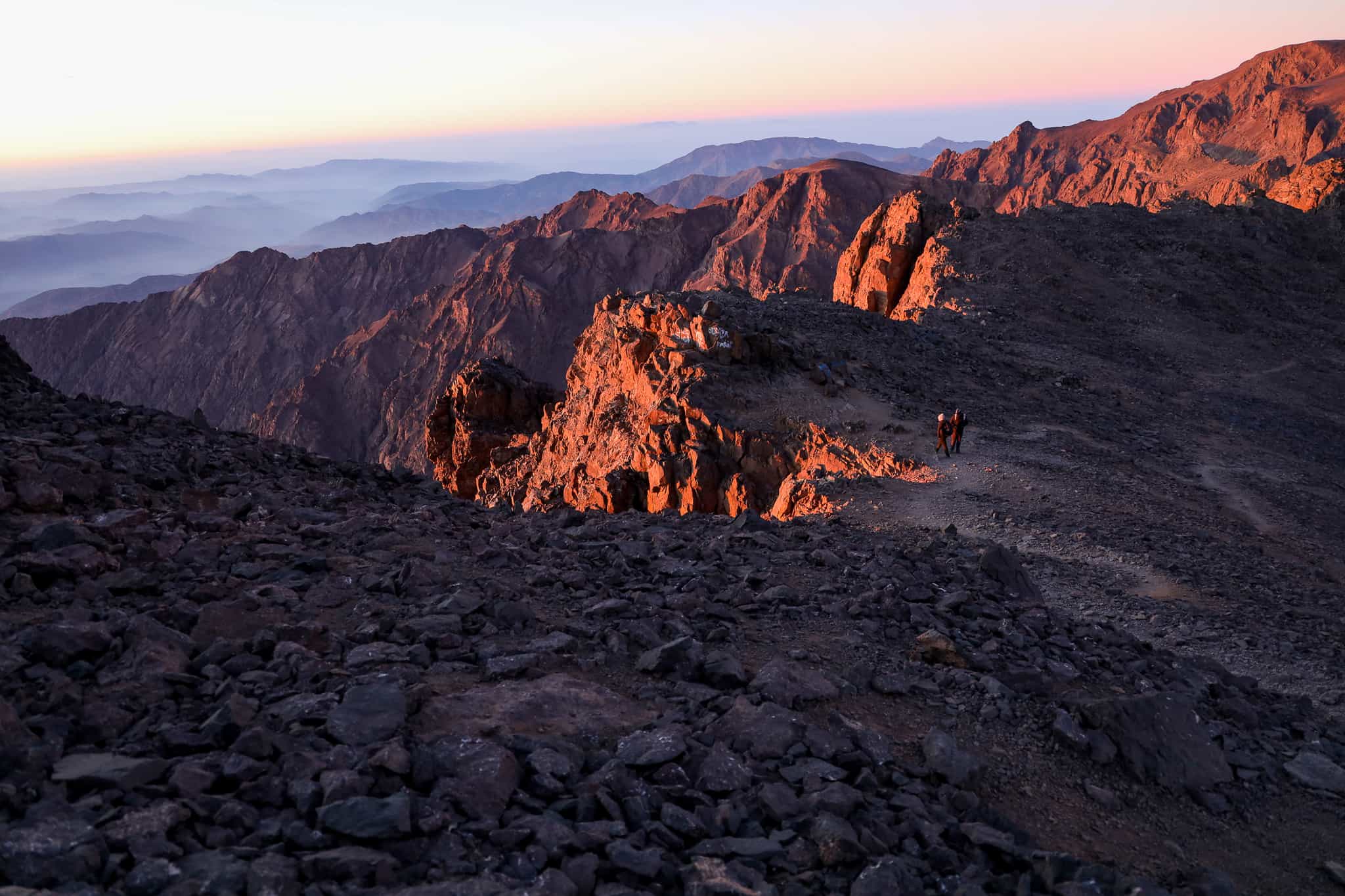
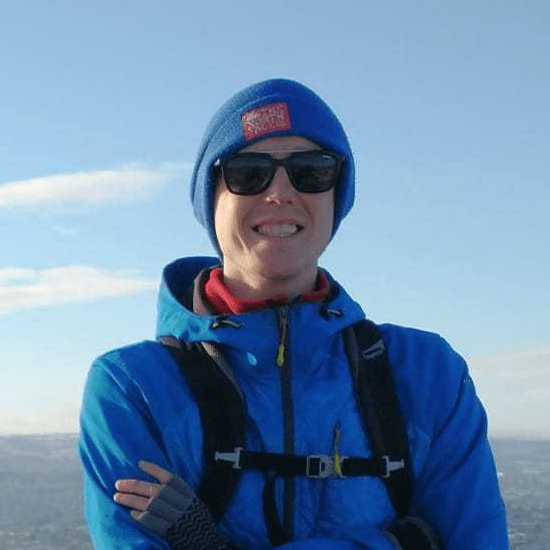
How fit do you need to be?
Every trip is different. Our friendly experts are here to help, whether it's about altitude, terrain, or recovering from injury.
We've got your back
Guaranteed to run
All Much Better Adventures trips are now guaranteed to run. Once you’ve booked your spot you can immediately make your travel arrangements, no uncertainty, no hanging about (excludes 'request to book' departures). Full details
Flexible payments
Secure your spot with the minimum deposit and pay off the remaining balance in as many instalments as you like, with no interest or fees. Full details
Happiness Guarantee
We’re so confident you’ll have an amazing time we’ll put our money on it. Full details
Full financial protection
To give you complete peace of mind Much Better Adventures is backed by ABTOT, ABTA and ATOL memberships. Full details
Tried & Trusted
Much Better Adventures is consistently rated ‘Excellent’ on Trustpilot with over 1000 verified trip reviews.
Connect before you go
You'll be invited to join a WhatsApp group to get to know each other before your big adventure together. Full details
DEPARTURE DATES
Saturday 28th March 2026
to Monday 6th April 2026
Fully Booked
